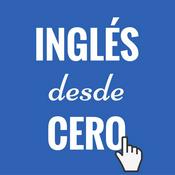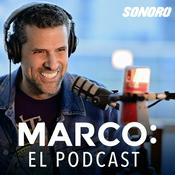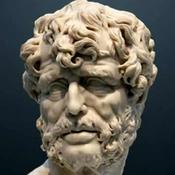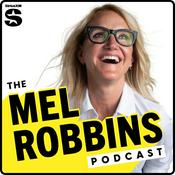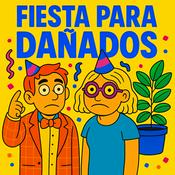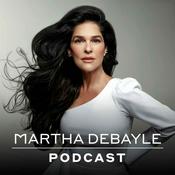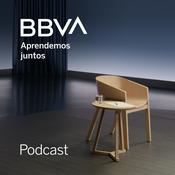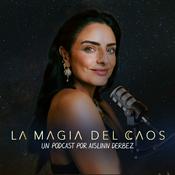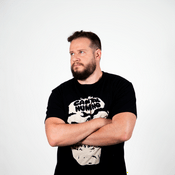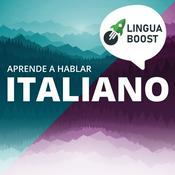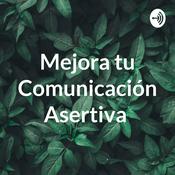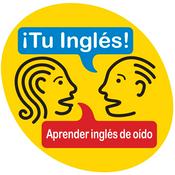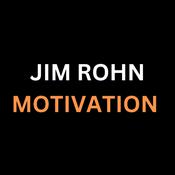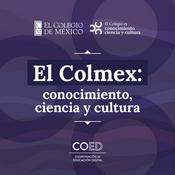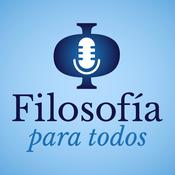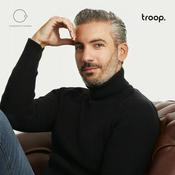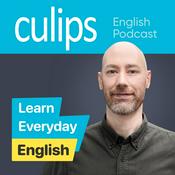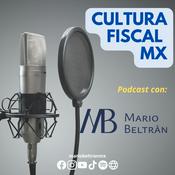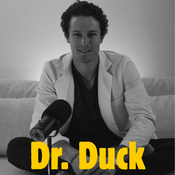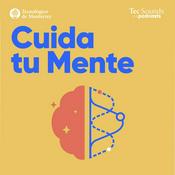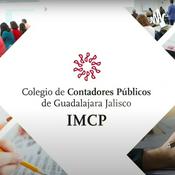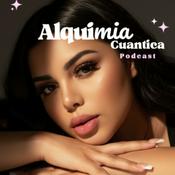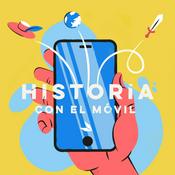384 episodios

Sleep, Learning and the Brain: Why Performance Collapses Without Rest PART 3 with Dr. Shane Creado
21/12/2025 | 23 min
In this Season 14 review (Part 3) Andrea revisits key insights from Dr. Shane Creado on the critical link between sleep, concussions and performance. The episode explains how even mild or repeated head impacts and sleep deprivation damage the same brain regions that support learning, memory, decision-making and emotional regulation, and how one all‑nighter can reduce hippocampal learning capacity by around 40%. Practical takeaways include treating sleep as neurological recovery (7–9 hours), protecting the brain after head jolts, avoiding late alcohol and screens, and prioritizing consistent sleep routines to restore learning, resilience and long‑term brain health for athletes, students and professionals. Welcome back to SEASON 14 of The Neuroscience Meets Social and Emotional Learning Podcast, where we connect the science-based evidence behind social and emotional learning and emotional intelligence training for improved well-being, achievement, productivity and results—using what I saw as the missing link (since we weren’t taught this when we were growing up in school), the application of practical neuroscience. I’m Andrea Samadi, and seven years ago, launched this podcast with a question I had never truly asked myself before: (and that is) If productivity and results matter to us—and they do now more than ever—how exactly are we using our brain to make them happen? Most of us were never taught how to apply neuroscience to improve productivity, results, or well-being. About a decade ago, I became fascinated by the mind-brain-results connection—and how science can be applied to our everyday lives. That’s why I’ve made it my mission to bring you the world’s top experts—so together, we can explore the intersection of science and social-emotional learning. We’ll break down complex ideas and turn them into practical strategies we can use every day for predictable, science-backed results. As we are nearing the end of Season 14 here, it has been about reflection as we have looked back and reviewed past interviews. Our goal has not been about nostalgia, or remembering these interviews, the goal has been about integrating what we have learned. Taking what we know, aligning it with how the brain actually functions, and applying it consistently enough to change outcomes. And if there’s one thing this season has reinforced, it’s this: Sustainable success isn’t built on intensity or focus alone—it’s built on alignment. As we move into what’s next, (Season 15) the focus shifts from understanding this alignment to bringing this alignment into a tangible, physical form, or embodiment. Not more information—but better execution. After hundreds of conversations with neuroscientists, educators, peak performers, and thought leaders, one truth keeps resurfacing— lasting success is never about doing more. It’s about alignment. Alignment between how the brain actually works, how emotions drive behavior, and how daily habits compound over time. Season 14 has been about stepping back—not to reminisce, but to integrate what we have learned into our current life. I knew the minute that I was sent a couple of video clips from our past episodes, that I had forgotten about, that while I thought I had implemented the ideas from our past guests, I had some work to go myself. For this reason, we spent Season 14 and will resume with Season 15 next January, reviewing past episodes, with the goal of noticing what we have now aligned, that’s bringing us results in our daily life. Core Reflection When we started this podcast 7 years ago, the goal was simple: bridge neuroscience research with practical strategies people could actually use. What I didn’t fully appreciate then—what only became clear through repetition, reflection, and real-life application—is that information alone doesn’t create change. Understanding the brain doesn’t matter if we ignore what to do with the information we release each week: improving our sleep reducing our stress practicing emotional regulation with consistency that actually changes who we are at the core: our identity Season 14 has been about connecting those dots. Listening again to conversations with voices like Dr. John Medina, Dawson Church, Bob Proctor, Dr. John Ratey, Friederike Fabritius, and so many others, one pattern became impossible to ignore: The brain thrives on simplicity, repetition, and finding emotional safety to implement these concepts—not intensity or a quick fix. We will take the time with each interview review to offer ways for all of us to implement the lessons learned, so that when we finish 2026, we will be able to look back, and see where our changes all began. This week, we move onto PART 3 of our review of EP 72[i] with Shane Creado, MD and his book Peak Sleep Performance for Athletes recorded back in July of 2020. ✔ In PART 1[ii], we covered: How strategic napping, morning brain habits, and even the Silva Method all work together to reset your brain, boost performance, and transform your health from the inside out. ✔ In PART 2[iii] we continued with our review, diving a bit deeper into sleep deprivation and its impact of performance (whether you are an athlete, or just someone looking to improve productivity). ✔ PART 3, we will go a bit deeper into the impacts of concussions and brain injuries on our sleep and performance. Let’s go back to 2020 and revisit what Dr. Creado had to say about sleep in this last episode of this season. VIDEO 1 – Click Here to Watch In the first clip of this episode, with Dr. Creado, he dives into the connection with concussions and sleep. He says, “Most people who have had a concussion end up with sleep problems. It makes a lot of sense when you think about the brain and how it regulates sleep and wakeful cycles and then it gets jarred. But what people don’t realize is that even a mild head injury can really damage your brain. Even if you’re not officially diagnosed with a concussion, you don’t have to lose consciousness to have a concussion. You don’t even need to have any symptoms to have your brain injured in some way. And then the little injuries along the way add up over time. So the brain is as soft as butter and in a hard, bony skull. Anything that jars it, even whiplash can cause your brain to be injured. And it accumulates over time. What’s interesting is that the same regions of the brain that are most damaged in head injuries are also damaged in sleep deprivation and also alcohol use. The frontal lobes, the temporal lobes and the parietal lobes at the top of the brain.” 🧠 5 KEY TAKEAWAYS FROM DR. CREADO’S CLIP Concussions and sleep problems are tightly linked Sleep disturbances are one of the most common long-term consequences of concussion—because the brain directly regulates sleep-wake cycles. My daughter had a concussion through her sports a few years ago, and I did ask her if she felt like the concussion affected her sleep afterwards, and her response was reassuring. While it did impact her sleep at the time, once her brain had healed, she went back to sleep as usual, showing that our brain can be injured, and heal, which shows its true resiliency. You don’t need to lose consciousness to injure your brain Mild head injuries, whiplash, or repeated small impacts can injure the brain—even without a formal concussion diagnosis or obvious symptoms. You do have to think back to any time where you think you had an incident where you brain was jarred, keeping in mind, that the consistency of our brain is like butter, in a hard skull, so any sort of jarring will likely have an impact. Brain injuries are cumulative Small, repeated “micro-injuries” add up over time, quietly impairing cognitive performance, emotional regulation, and recovery. You will know this once you have had one concussion, because doctors will always ask you “Is this your first concussion?” for this reason. The brain is physically vulnerable The brain’s soft tissue sits inside a rigid skull—any jarring motion can cause damage, even outside of contact sports. The first person I learned about Traumatic Brain Injuries (TBIs) was from Dr. Daniel Amen, who specializes in transforming mental and physical health with his work at Amen Clinics. His website is full of tips for brain health, including his Concussion Rescue Program[iv] that has helped NFL Players, Championship Boxers, and Thousands of Every Day People. His treatment is centered around his clinics that are in various locations in the USA, (Chicago, Dallas Fort Worth, Los Angeles Metro Area, Miami/Ft. Lauderdale, New York Metro Area, Orange County, a NEW clinic now in Phoenix/Scottsdale Metro, and San Francisco Bay Area. The treatment plans are targeted for each person’s situation, and include Hyberbaric Oxygen Therapy (HBOT), Neurofeedback, Hormone Evaluation and Replacement and Targeted Neutroceuticals. Sleep deprivation damages the same brain regions as head injury The frontal, temporal, and parietal lobes—critical for: Decision-making Emotional regulation Memory Focus and awareness —are impaired by head injury, poor sleep, and alcohol use. Sleep is not passive—it’s protective and reparative Quality sleep is one of the primary tools the brain uses to heal, detoxify, and restore neural function. 🔑 WHY THIS MATTERS (BEYOND ATHLETES) Dr. Creado’s insight applies to: Students with repeated minor head injuries impacting sleep loss Educators & leaders under cognitive load and stress Professionals relying on executive function and emotional control Anyone who has experienced whiplash, falls, or repeated stress + poor sleep Sleep loss silently weakens the same systems we depend on for peak performance. 🛠 PRACTICAL TIPS TO IMPROVE BRAIN HEALTH & SLEEP 💤 1. Treat sleep as neurological recovery Aim for 7–9 hours consistently Prioritize regular going to bed and wake times—even on weekends 🧠 2. Protect the frontal lobes Avoid alcohol close to bedtime (it fragments REM & deep sleep) Reduce late-night decision-making and screen exposure 🚦 3. Respect “mild” injuries After any head jolt or whiplash: Reduce cognitive load Avoid intense workouts temporarily Increase sleep duration to increase repair 🌙 4. Optimize the sleep environment Dark, cool, quiet room No screens 60 minutes before bed Use wind-down routines to cue the nervous system that you are preparing to go to sleep. 🔁 5. Stack recovery habits Light morning movement + daylight exposure Magnesium or glycine (if appropriate) ( I do take Qualia Magnesium[v] before sleep every night and it improves the quality and duration of my sleep). Breathwork or parasympathetic activation before sleep 🧩 6. Think long-term brain health Sleep debt + micro-injuries compound over years Recovery today protects cognition tomorrow VIDEO 2 Click Here to Watch In the second video clip from Dr. Creado on this episode, he shares that “When College students and high school students are sleep deprived, their GPA plummets and they’re twice as likely in some cases to drop classes and quit. That’s a big thing. We know that certain brain regions are affected when you’re sleep deprived. For example, if you are sleep deprived, one all nighter can result in your hippocampus area in the temporal lobe (that helps with new learning), it essentially shuts down its functions, dropping by 40%. So, imagine having a 40% decline in learning. How are you going to go through school? That’s the difference between getting an A and flunking out. So, it does affect your ability to process, retain information, manipulate information, and if you’re irritable, frustrated, have short tolerance for doing things, how are you going to attempt a math problem? I hated maths (he says) I was terrible at it in high school and I realize looking back, besides the fact I was bad at it. It was sleep deprivation.” 🧠 KEY TAKEAWAYS FROM DR. CREADO’S SECOND CLIP Sleep deprivation directly lowers academic performance When high school and college students are sleep deprived: GPA drops significantly Drop-out and course-withdrawal rates increase Sleep loss isn’t just a “tired” problem—it’s an academic risk factor. One all-nighter can reduce learning capacity by ~40% A single night without sleep can reduce activity in the hippocampus (in the temporal lobe)—the brain’s center for new learning and memory formation—by up to 40%. This is the difference between excelling and failing Creado puts it plainly: That’s the difference between getting an A and flunking out. Sleep loss blocks every step of learning When sleep deprived, students struggle to: Process new information Retain what they learn Manipulate and apply knowledge (problem-solving, math, reasoning) Emotional regulation collapses with sleep loss Irritability, frustration, and low tolerance rise sharply—making it far harder to persist through challenging tasks like math or complex thinking. Many “learning struggles” are actually sleep struggles Creado’s reflection is powerful: What he once thought was being “bad at math” was largely chronic sleep deprivation impairing his brain’s ability to learn. 🎓 WHY THIS MATTERS FOR STUDENTS & EDUCATORS Sleep deprivation: Mimics learning disabilities Undermines motivation and confidence Disproportionately affects adolescents whose brains biologically need more sleep This reframes sleep as an academic intervention, not a lifestyle choice. 🛠 PRACTICAL TIPS TO IMPROVE LEARNING & SLEEP 💤 1. Protect sleep before learning Aim for 8–10 hours for teens, 7–9 hours for college students Avoid all-nighters—they sabotage the hippocampus 🧠 2. Study smarter, not later Front-load studying earlier in the evening Use sleep to consolidate memory, not replace it 🌙 3. Reduce cognitive overload at night No screens 60–90 minutes before bed Dim lights to support melatonin release ⏰ 4. Keep a consistent sleep schedule Same bed/wake times—even on weekends Irregular schedules disrupt memory formation ☀️ 5. Anchor mornings with light Morning sunlight resets circadian rhythm Improves alertness and learning readiness 😤 6. Address irritability as a sleep signal Short fuse = brain running on empty Emotional dysregulation often precedes academic decline 🧠 REVIEW AND CONCLUSION: WHAT BOTH CLIPS REVEAL TOGETHER When you place these two clips side by side, a clear neuroscience story emerges: 1. Sleep loss and brain injury affect the same systems Head injuries (including mild, cumulative ones) Sleep deprivation Alcohol use All impair the frontal, temporal, and parietal lobes—the brain regions responsible for: Focus and decision-making Emotional regulation Memory and learning Problem-solving and persistence This means sleep deprivation isn’t just “being tired”—it’s functionally similar to brain injury. 2. Learning collapses without sleep Dr. Creado highlights a striking finding: One all-nighter can reduce hippocampal function by ~40% The hippocampus is essential for: New learning Memory encoding Academic performance A 40% drop in learning capacity is not subtle—it’s the difference between: Understanding vs. confusion Confidence vs. frustration Progress vs. withdrawal or quitting 3. Academic struggles are often neurological, not motivational Across both clips, we see that sleep deprivation: Lowers GPA Increases course dropouts Increases irritability and frustration Reduces tolerance for effortful tasks (like math or complex thinking) Many students labeled as: “Unmotivated” “Bad at math” “Not academic” are actually sleep deprived brains trying to function at a deficit. 4. The damage is cumulative—but so is recovery Just as micro-injuries add up over time, so does sleep debt. But the hopeful message across both clips is this: 👉 Sleep is the brain’s primary repair mechanism Quality, consistent sleep: Restores learning circuits Supports emotional regulation Protects long-term brain health Improves performance across academics, sports, and life 🎯 CONCLUSION: THE BIG IDEA REVIEW & CONCLUSION – EPISODE 380 Peak Sleep Performance: Sleep as Protection, Performance, and Prevention (Part 3 of our review of EP 72 with Dr. Shane Creado, MD) You cannot separate sleep from performance, learning, or brain health. Dr. Creado’s work reframes sleep as: A neurological necessity An academic intervention A protective factor against brain injury A competitive advantage for athletes and students alike Whether we’re talking about: A student pulling all-nighters An athlete with repeated minor head impacts A professional operating on chronic sleep loss The message is the same: Sleep is not optional. It is foundational. Protect sleep—and you protect: Learning Emotional resilience Decision-making Long-term success Just to remind us of the 6 Health Staples we are covering: 1 Sleep The foundation of brain health, learning, emotional regulation, recovery, and performance. 2 Exercise Strengthens the brain and body, improves mood, focus, and resilience—when paired with adequate sleep. 3 Nutrition Provides the fuel and building blocks for cognition, memory, and sustained energy. 4 Stress Management Supports emotional regulation, impulse control, and the brain’s ability to adapt under pressure. 5 Recovery & Downtime Allows the brain to repair, integrate learning, and heal from physical and cognitive load. 6 Environment & Daily Routines The structure that makes healthy behaviors repeatable—sleep timing, light exposure, screen habits, and consistency. When one health staple breaks down—especially sleep—the others lose their power. And with that thought, we are coming close to completing Season 14—a season rooted in reflection. Our goal this year was to look back at past episodes and intentionally integrate these neuroscience and SEL concepts into our daily lives, not just understand them, but live them. Season 15 will begin in January, where we’ll continue reviewing past episodes with a renewed focus—shifting insight into tangible, visible, daily results you can apply in real time. But before the calendar turns, we have something special planned. Over the holiday season, we’ll be releasing a book-based series I’ve been working on for quite some time—one I’ve wanted to explore for several years now. This upcoming series, Think and Grow Rich for Sales, offers a fresh and practical lens on a timeless classic. And even if you’re not in the sales profession, I strongly encourage you to listen. The truth is—we are all selling every day. We sell ideas, influence, solutions, and ourselves. When you understand the science behind a successful sale, you’ll begin to see powerful shifts in your relationships, confidence, and productivity. We’ll see you soon—sometime over the holiday season—with this new series. Until then, we hope you’re enjoying a season of rest, reflection, and connection. Thank you, as always, for being part of this journey. RESOURCES: CLIP 1 https://www.youtube.com/shorts/PN9zq64EMfs Clip 2 https://www.youtube.com/shorts/TleWTiyQW48 REFERENCES: [i] Neuroscience Meets Social and Emotional Learning Podcast EPISODE #72 with Dr. Shane Creado on “Sleep Strategies that will Guarantee a Competitive Advantage.” https://andreasamadi.podbean.com/e/dr-shane-creado-on-sleep-strategies-that-will-guarantee-a-competitive-advantage/ [ii]Neuroscience Meets Social and Emotional Learning Podcast EPISODE #378 PART 1 REVIEW with Dr. Shane Creado on “Unlocking Peak Performance With Strategic Napping: Science-Backed Tips” https://andreasamadi.podbean.com/e/unlock-peak-performance-with-strategic-napping-%E2%80%94-science-backed-sleep-tips/ [iii]Neuroscience Meets Social and Emotional Learning Podcast EPISODE #379 PART 2 REVIEW with Dr. Shane Creado on “Optimizing Brain Health and Performance with The Silva Method” https://andreasamadi.podbean.com/e/sleep-is-your-superpower-optimize-brain-health-performance/ [iv] https://www.amenclinics.com/services/concussion-rescue-program/ [v] Neuroscience Meets Social and Emotional Learning Podcast EPISODE #351 with Dr. Gregory Kelly on “Unlocking the Secrets of Magnesium for Brain and Body Health” https://andreasamadi.podbean.com/e/unlocking-the-secrets-of-magnesium-for-brain-and-body-health/

Sleep Is Your Superpower: Optimizing Brain Health & Performance with The Silva Method PART 2 with Dr. Shane Creado
07/12/2025 | 29 min
Join Andrea Samadi as she reviews Dr. Shane Creado’s insights on why sleep is a core pillar of brain health, how chronic sleep deprivation harms reaction time, inflammation, pain perception, and why children pay the highest price. Learn practical sleep strategies—consistent schedules, light management, wind-down routines—and how the Silva Method’s mind-training can deepen restorative sleep for athletes, high performers, and families. Welcome back to SEASON 14 of The Neuroscience Meets Social and Emotional Learning Podcast, where we connect the science-based evidence behind social and emotional learning and emotional intelligence training for improved well-being, achievement, productivity and results—using what I saw as the missing link (since we weren’t taught this when we were growing up in school), the application of practical neuroscience. I’m Andrea Samadi, and seven years ago, launched this podcast with a question I had never truly asked myself before: (and that is) If productivity and results matter to us—and they do now more than ever—how exactly are we using our brain to make them happen? Most of us were never taught how to apply neuroscience to improve productivity, results, or well-being. About a decade ago, I became fascinated by the mind-brain-results connection—and how science can be applied to our everyday lives. That’s why I’ve made it my mission to bring you the world’s top experts—so together, we can explore the intersection of science and social-emotional learning. We’ll break down complex ideas and turn them into practical strategies we can use every day for predictable, science-backed results. This week, we move onto PART 2 of our review of EP 72[i] with Shane Creado, MD and his book Peak Sleep Performance for Athletes recorded back in July of 2020. In PART 1[ii], we covered: How strategic napping, morning brain habits, and even the Silva Method all work together to reset your brain, boost performance, and transform your health from the inside out. Today, PART 2 we will continue with our review, diving a bit deeper into sleep deprivation and its impact of performance (whether you are an athlete, or just someone looking to improve productivity). PART 3, next week, we will go a bit deeper into the impacts of concussions and brain injuries on our sleep and performance. Just a reminder: Dr. Creado is a double board-certified sleep medicine doctor and psychiatrist who practices functional sleep medicine, integrative psychiatry, and sports psychiatry. He brings all of these specialties together to uncover the underlying factors that sabotage our sleep and then treats them comprehensively, helping people to achieve their health and performance goals with sleep at the forefront As we work through our reviews, we will spend a considerable amount of time on this important health staple that’s scientifically proven to boost our physical and mental health. For today’s EP 379, and PART 2 of our review of our 2020 interview with Dr. Shane Creado, we will cover: ✔ Sleep as a core pillar of health according to Dr. Shane Creado, author of Peak Sleep Performance for Athletes. ✔ Sleep deprivation is a national crisis and kid’s pay the highest price. ✔ 7 Well-Known Tips for Improving Sleep ✔ Applying the Silva Method to Reset and Improve Our Sleep ✔ Important sleep tips for athletes and high performers Let’s go back to 2020 and revisit what Dr. Creado had to say about sleep. CLIP 1 — Why Sleep Is Non-Negotiable for Brain Health Short Explanation: In Clip 1, Dr. Shane Creado explains that sleep is a foundational pillar of brain health, equal in importance to exercise and nutrition. He emphasizes that without optimizing sleep, it is impossible to truly optimize learning, emotional regulation, focus, or performance. Dr. Creado highlights that chronic sleep deprivation is widespread in the U.S., often unnoticed, and especially damaging for children—where lack of deep sleep suppresses growth hormone, increases obesity risk, and raises the likelihood of developing mental-health challenges later in life. His message is clear: when sleep improves, the entire “fabric” of life and health begins to change. VIDEO 1 – Click Here to Watch In our next video clip from Dr. Creado, I ask him to dive deeper into optimizing our brain health with a quote from his book that reads “your brain health and sports performance cannot be optimized unless your sleep is optimized. And once this is achieved your quality of life will skyrocket. When you sleep well, the fabric of your life will change. And when this happens, it will have a ripple effect.” This sounds like a simple concept, but for those of us who have been working on improving this pillar, we know it’s one of those concepts that easier said, than done. Let’s hear Dr. Creado’s thoughts on my question- And Dr. Creado replied that “sleep is one of the pillars of brain health along with exercise and nutrition. And we need to make sure we’re getting the right amount of sleep. Most adults and most teenagers don’t know about this but a vast majority, 70 million Americans suffer from a sleep problem. And way more than those suffer from sleep deprivation, chronic sleep deprivation. If a child is deprived of sleep, their growth hormone levels will be suppressed because deep sleep is where growth hormone levels peak, so basically you are going to be stunting your growth. Over 80% of kids who are sleep deprived go on to develop obesity. There’s a huge overlap between kids who are chronically sleep deprived who manifest mental health conditions later in life.” 🌙 KEY TAKEAWAYS FROM DR. CREADO’S CLIP We will review these take-aways, (many that are well-known- as a reminder to close any gaps we might have with our sleep) and then we will add a new spin, as we tie the popular Silva Method into these tips, for ALL of us to take our sleep to new heights. We just received our 2025 Spotify Wrapped stats, (this gives us insight into our listeners who tune in via Spotify over the past year) and The Silva Method, (from 2022) holds the top spot again for listeners for a 3rd year in a row. This is important for me to notice what is important to YOU, the listener, so when appropriate, I will link the popular Silva Method, to our content. Sleep is a Core Pillar of Brain Health Along with exercise and nutrition, sleep forms the foundation of cognitive health. Without optimized sleep, you cannot optimize brain function, learning, focus, emotional regulation, or performance. Sleep Deprivation Is a National Crisis 70 million Americans suffer from a sleep disorder. Many more live in a state of chronic sleep deprivation without realizing it. It wasn’t until Dr. Creado looked at my brain scan from Amen Clinics just a few months AFTER this episode in 2020, and told me that I had the pattern of a sleep deprived brain, did I start to get serious about improving this important health staple. Children Pay the Highest Price Kids deprived of deep sleep have suppressed growth hormone → which literally stunts physical growth. 80% of sleep-deprived children develop obesity. Chronic sleep loss in childhood is strongly linked to later mental-health challenges. Sleep Changes the “Fabric of Your Life” When sleep improves, every system of the body and brain recalibrates. Relationships, mood, decision-making, energy, learning, and performance all rise. ✅ TIPS TO PUT THESE IDEAS INTO ACTION 1. Target the Right Sleep Amount Adults: 7–9 hours Teens: 8–10 hours Kids: 9–12 hours Track for ONE WEEK and see what you notice. There are many different ways you can track sleep, with wearable devices, or even through your iPhone. 2. Build a Pre-Sleep “Wind-Down Ritual” (20–30 min) A short, consistent routine signals the brain it’s time to shut down. Examples: Dim lights Light stretching Hot shower Reading 4–7–8 breathing No emotional conversations, no rumination 3. Protect Your Light Environment Light controls melatonin. Morning: Seek 5–10 minutes of natural sunlight. Night: Reduce screens or use night mode 1–2 hours before bed. Keep the bedroom dark, cool (65–67°F), and quiet. 4. Keep a Consistent Sleep/Wake Schedule Even on weekends. This stabilizes your circadian rhythm and improves the quality of deep sleep. This is my area of strength with sleep. I go to bed the same time every day (Monday-Sunday) and wake up the same time no matter what day of the week it is. On the rare days I stray from this routine, everything turns upside for me, so I work hard on keeping this consistency. 5. Strengthen Deep Sleep (Where the Magic Happens) Deep sleep boosts: Growth hormone Memory consolidation Emotional regulation Cellular repair To increase deep sleep: Exercise in the morning or early afternoon Keep caffeine cutoff at 2:00 p.m. Don’t eat heavy meals late at night Cool the room 6. Watch for Red Flags (Especially in Kids) Difficulty waking Mood swings Falling asleep in class Attention problems Weight gain Frequent illness These are often sleep issues in disguise. 7. Use a Simple Nighttime “Audit” Each night, ask yourself: What time did I go to bed? What disrupted my sleep? What will I change tomorrow? TAKING OUR SLEEP TO THE NEXT LEVEL WITH THE SILVA METHOD Many of these TIPS we have heard already and the key is to keep track of where you are able to make improvements. Let’s add the popular Silva Method to our Sleep Reset Routine, and see how we can take our sleep even deeper. The Silva Method was covered in our most downloaded 4 PART Series[iii] based on the work of Jose Silva, and this one Series was streamed 999% more than any other episode we have created in the 7 years we have been hosting this podcast. 🌙THE SILVA METHOD SLEEP RESET (2–3 Minutes) Neuroscience + Mind Training for Better Sleep 🧠 1. Alpha Entry (3–2–1) Shift your brain from beta → alpha → theta for natural sleep pathways. Close your eyes. Slow breath in… slow breath out. Count down: 3… “My body relaxes.” 2… “My mind becomes calm.” 1… “I enter my ideal level for sleep.” On “1,” imagine a warm wave of relaxation dropping you into Alpha. When I’m tired, and I lay down to go to sleep, after practicing this method for many years now, I can actually feel when I’ve hit that Alpha Sleep State. This is a magical place, and if you don’t do anything else with this state, it’s a great place to find a place of calm, before you drift off to sleep. 💬 2. Subconscious Programming Use intention-based language to direct the mind: “Tonight my brain resets. I will wake restored.” (whatever it is you want to solve or work on) Let this intention sink deeply into the subconscious. 🌫 3. Release & Clear Use the Silva Command Technique: “I now release the day. All tension dissolves. Only calm remains.” Picture the entire day evaporating like mist. 💤 4. Deep Sleep Visualization Guide your brain toward deep, restorative sleep. Visualize: Your body sinking into the mattress Your breath becoming slow and rhythmic Brain waves shifting toward deep delta Cells repairing and your mind rebooting (from head to toe). Affirm: “I sleep deeply. My brain resets. I wake renewed.” 5. Morning Installation Anchor tomorrow’s outcome. See yourself waking: Calm Clear Sharp Energized Say: “Calmness, Peace, Clarity, a Sharp and Energized Mind and Body is my reality.” 😴 6. Drift Deeper Take three slow breaths. With each exhale, whisper internally: “Deeper…” “Deeper…” “Deeper…” Let your body float down like warm sand — easing naturally into theta → delta for true restorative sleep. If you have not yet listened to our 4 PART Series on The Silva Method, and its benefits, I highly encourage you do this. Deeper sleep is only one of the benefits of The Silva Method. 🌙 SILVA METHOD SLEEP RESET — FOR KIDS Since Dr. Creado mentioned that our children pay the highest price for sleep deprivation, I thought it would be important to cover how any of us can teach The Silva Method to our kids. ((I won’t read this out loud for this episode, but you can go to the show notes if you would like to apply this method to your children for their bedtime routine). This is a reminder for all of us to not forget that Jose Silva created this method originally when he was working with radios and electronic circuitry to improve his children’s learning. I can only imagine how motivated he was, because when our children are little, most of us as parents would do anything to set our kids up for success. We read books, gain new ideas and theories and work on implementing them. Silva’s Mind Control Theory, is backed by science, and as Dr. Creado reminded us, it’s important for our children to get the right amount of sleep for their growth hormones, let alone their mental and physical health. To Implement The Silva Method for Your Kids: (A calm, magical bedtime routine you can read aloud) 1. Set a Simple, Positive Intention “Tonight I sleep deeply. My body rests, my mind feels happy, and I wake up ready for a new day.” (For younger kids: “Tonight I will sleep like a peaceful superhero.”) 2. The Kid-Friendly Alpha Countdown (3–2–1) Say softly: “Close your eyes and take a slow breath. Now we’re going to do the magic countdown: 3 — My body gets soft like a teddy bear 2 — My mind becomes calm and quiet 1 — I’m in my cozy dream place” This moves them from beta → alpha, just like the adult version, but in child-safe imagery. 3. Release the Day (Silva “Command Technique”) “Anything from today that was busy or noisy — we let it float away like a balloon into the sky.” Kids respond beautifully to metaphors involving movement and release. 4. Create Their Dream Scene (Silva Visualization Step) Guide them to gently imagine: A safe, cozy place Soft lights Warm blankets Their favorite animal or character sitting beside them Stars twinkling above Then say: “Your brain and body are getting sleepy in the best way.” 5. Program the Sleep Use Silva-style subconscious messaging: “You’re safe. You’re loved. Your body knows exactly how to sleep deeply. Every minute you sleep, you grow stronger, smarter, and calmer.” This is especially powerful for kids who struggle with anxiety or nighttime restlessness. 6. Install the Morning Result “Imagine waking up tomorrow with a big smile, your body full of energy, and your mind ready to learn and play.” This anchors the beneficial outcome in their subconscious. 7. Drift Into Sleep “Take a slow breath in… and now breathe out like you’re blowing out a candle.” Do this 3 times. Then repeat softly: “Deeper… Deeper… Deeper…” Their nervous system will naturally shift toward theta and then delta. Try the Silva Method with your children and see how they respond. I didn’t practice this method with my kids when they were little, but I did give them an intention of health and well-being EVERY night, before they went to sleep. Sometimes out loud, and sometimes I would just think this to send my kids off to sleep with good intentions. I would say “You will sleep well tonight, and wake up, and have an incredible day tomorrow. You will accomplish ALL of your goals and dreams, and live a happy and healthy life.” I do believe the words we say out loud, and even think, can impact our results and if our children pay the highest price with their sleep, it’s worth trying something, especially when your children are young, to create the habit of drifting soundly off to sleep. CLIP 2 — How Sleep Deprivation Increases Risk and Injury Short Explanation: In Clip 2, Dr. Creado focuses on the real-world consequences of chronic sleep deprivation, particularly for athletes but applicable to everyone. He explains that a sleep-deprived brain operates on reduced capacity—reaction times slow, awareness drops, inflammation rises, stress hormones increase, and pain perception becomes amplified. This makes the brain more fragile and more vulnerable to injury. Even small sleep deficits can significantly increase risk, especially when reaction time and awareness are critical. Dr. Creado reframes sleep as protection: when sleep is inadequate, both performance and safety are compromised. VIDEO 2 Click Here to Watch In our second video clip with Dr. Creado, he reminds us that “if you are sleep deprived, and you are an athlete for example, your brain is already running on fumes, basically, and your reaction times will be reduced if you are chronically sleep deprived. And I mean that depends on how much sleep each person needs. So if you are getting 7 hours at night, and you think you’re great, but your brain needs 9 hours of sleep, you’re still sleep deprived. So you’ll have more inflammation, less protective hormones, more stress hormones, lower pin tolerance. So if you perceive pain to be 5/10 if 10 is the worst pain that you could have, with sleep deprivation you’ll perceive your pain to be 8/9 out of 10. All these factors are already there if someone is chronically sleep deprived. And then their reaction times are reduced, they don’t see the guy coming at them out of the corner of their eye, BOOM, they’re hit, so their brain is more vulnerable already, more fragile, so their symptoms will be more severe.” ✅ KEY POINTS FROM DR. CREADO (CLIP 2) 1.Sleep deprivation slows brain reaction time When you are chronically sleep deprived, your brain operates on reduced capacity. Reaction time, awareness, and peripheral vision are all impaired—raising the risk of injury, especially for athletes. TIP TO IMPLEMENT Track reaction-based mistakes (missed cues, slower responses) during training or workdays. Treat reaction errors as a sleep signal, not a skill problem. Adjust training intensity on low-sleep days; prioritize recovery over performance. 2. Sleep needs are individual—not universal Feeling “fine” on 7 hours does not mean your brain is fully rested. If your brain needs 9 hours, anything less is still sleep deprivation. TIP TO IMPLEMENT Identify your true sleep need by tracking: Energy levels Focus Mood Pain sensitivity Aim for the minimum hours where all four improve, not just “acceptable” sleep. Increase sleep in 15–30 minute increments over 7–10 days to find your optimal range. I notice that when I have heavier training days, (when I run for more than 7 miles in the mountains) or days that my stress levels come in higher than usual, that my Whoop tracker will tell me that I need more sleep to compensate for the extra stress or strain that day. This was one of the most eye-opening concepts to me while tracking sleep. If you over train, it will show up eventually with injury, but also, as I started to track my blood results, inflammation from overtraining also showed up on a couple of my bio-markers. DHEA Sulfate Reading DHEA sulfate is an adrenal hormone that acts as our stress buffer. It balances cortisol and supports recovery. When DHEA-S is low, we worry about burnout. When it’s robust — even slightly elevated — it tells us the body is still adapting to sustained challenge. An elevated DHEA-S on its own doesn’t mean something is wrong. It can reflect high engagement, purpose-driven work, and a nervous system that’s still compensating well. What matters is whether we pair that output with intentional down-regulation — because resilience isn’t about pushing harder, it’s about recovering smarter.” This reading for me showed up in a blood test from May 2025 for me as “Out of Range.” I wondered, why is this test out of what is considered the “healthy range?” and this new feature on the Whoop app (that we will revisit on another episode) told me my blood test being out of range, was a reflection of chronic stress, or overtraining symptoms). Both of these factors impact my sleep need. 3. Chronic sleep loss increases inflammation and stress hormones Lack of sleep elevates inflammation, suppresses protective hormones, and increases cortisol—putting the brain and body in a constant stress state. TIP TO IMPLEMENT Protect sleep as an anti-inflammatory tool, not a luxury. Pair sleep with: Consistent sleep/wake times Reduced late-night screen exposure Calm pre-bed routines Think of sleep as your primary recovery supplement. 4. Sleep deprivation amplifies pain perception Pain feels significantly worse when sleep deprived. A moderate pain stimulus can register as severe pain due to reduced pain tolerance. TIP TO IMPLEMENT If pain feels unusually intense, check sleep first before assuming injury progression. Prioritize sleep during injury recovery or high-stress periods. Avoid pushing through pain after poor sleep—this increases risk, not resilience. 5. A tired brain is more vulnerable to injury Slower reaction times mean missed visual cues. The already-fatigued brain is more fragile, leading to more severe symptoms when injury occurs. TIP TO IMPLEMENT On low-sleep days: Reduce exposure to high-risk situations Emphasize form, awareness, and safety Coaches and leaders should screen for sleep, not just symptoms. Build sleep checks into return-to-play or high-performance decisions. 🧠 BIG PICTURE TAKEAWAY Sleep deprivation doesn’t just make you tired—it: Slows your brain Amplifies pain Increases inflammation Weakens reaction time Makes injury more severe Sleep is protection. Sleep is performance. Sleep is prevention. REVIEW & CONCLUSION – EPISODE 379 Peak Sleep Performance: Sleep as Protection, Performance, and Prevention (Part 2 of our review of EP 72 with Dr. Shane Creado, MD) In this episode, we returned to our 2020 interview with Dr. Shane Creado, a double board-certified sleep medicine physician and psychiatrist whose work sits at the intersection of functional sleep medicine, integrative psychiatry, and sports performance. His central message—now more relevant than ever—is clear: You cannot optimize brain health, athletic performance, or quality of life unless sleep is optimized first. In Part 1, EP 378, we explored how strategic napping, morning brain habits, and the Silva Method work together to reset the nervous system and support peak cognitive and physical performance. In Part 2, this week’s episode, we went deeper—into why sleep is not just helpful, but protective, and why sleep deprivation has become one of the most urgent and under-recognized public-health crises of our time. 🧠 WHAT THIS EPISODE REINFORCED Dr. Creado reminded us that sleep sits alongside exercise and nutrition as a core pillar of brain health. When sleep breaks down, everything else follows—focus, learning, emotional regulation, reaction time, recovery, and resilience. We also revisited the reality: 70 million Americans suffer from sleep disorders. Millions more are chronically sleep deprived without realizing it. Children pay the highest price, with sleep loss impacting growth hormone, metabolism, weight, and long-term mental health. Perhaps most powerfully, Dr. Creado explained that sleep deprivation doesn’t just make us tired—it: Slows reaction time Increases inflammation Amplifies pain perception Raises injury risk Makes brain trauma more severe A tired brain is a vulnerable brain. And this applies not only to elite athletes—but to students, parents, educators, leaders, and anyone living in a high-pressure, always-on world. 🌙 WHY THE SILVA METHOD BELONGS IN THIS CONVERSATION As we reviewed familiar sleep tips—consistent schedules, light management, wind-down routines—we added a powerful layer: mind training. The overwhelming response to our Silva Method series (now our most-streamed content for the third year in a row) shows us something important: listeners want tools that help the brain shift states—quickly and intentionally. The Silva Method does exactly that by: Guiding the brain from beta → alpha → theta Activating the parasympathetic nervous system Reducing stress hormones Preparing the mind and body for deep, restorative sleep When paired with Dr. Creado’s science, the Silva Method becomes a bridge—connecting knowledge to action, and intention to biology. Sleep becomes something we train, not something we hope for. 👶 WHY THIS MATTERS FOR KIDS One of the most important takeaways from this episode is that children are the most vulnerable to sleep loss, and yet often the least protected from it. Teaching kids: How to calm their minds How to release the day How to visualize rest and safety is not just about sleep—it’s about self-regulation, emotional security, and long-term brain health. Whether through the Silva Method or simple bedtime intention-setting, we are shaping the internal environment our children grow up in—night after night. 🧩 THE BIG PICTURE This two-part review brings us back to a truth worth repeating: Sleep is not a luxury. Sleep is not optional. Sleep is the foundation. Sleep is: Protection against injury and burnout Performance fuel for focus, learning, and resilience Prevention against long-term physical and mental health challenges When sleep improves, the fabric of your life changes—and the ripple effects touch everything. As we continue building our roadmap through the Top Health Staples, sleep remains the pillar that holds them all together. If there’s one thing to take from Episode 379, it’s this: You don’t need to do everything perfectly— you just need to start protecting your sleep. And when science and mind training work together, better sleep becomes not just possible—but repeatable. We will see you next time with PART 3 of our review with Dr. Shane Creado. RESOURCES: Clip 1: Chronic Sleep Deprivation: Why Sleep is Non-Negotiable https://www.youtube.com/shorts/73LqJlL-Wx0 Clip 2: How Sleep Deprivation Increases Risk and Injury https://www.youtube.com/shorts/CjQSm-O0tbU REFERENCES: [i] Neuroscience Meets Social and Emotional Learning Podcast EPISODE #72 with Dr. Shane Creado on “Sleep Strategies that will Guarantee a Competitive Advantage.” https://andreasamadi.podbean.com/e/dr-shane-creado-on-sleep-strategies-that-will-guarantee-a-competitive-advantage/ [ii]Neuroscience Meets Social and Emotional Learning Podcast EPISODE #378 PART 1 REVIEW with Dr. Shane Creado on “Unlocking Peak Performance With Strategic Napping: Science-Backed Tips” https://andreasamadi.podbean.com/e/unlock-peak-performance-with-strategic-napping-%E2%80%94-science-backed-sleep-tips/ [iii] Neuroscience Meets Social and Emotional Learning Podcast EPISODE #261 PART 1 of Apply the Silva Method for Improved Intuition, Creativity and Focus. https://andreasamadi.podbean.com/e/a-deep-dive-with-andrea-samadi-into-applying-the-silva-method-for-improved-intuition-creativity-and-focus-part-1/

Unlock Peak Performance with Strategic Napping — Dr. Shane Creado's Sleep Research Combined with The Silva Method
23/11/2025 | 27 min
Episode 378 revisits Dr. Shane Creado’s science-driven advice on sleep, strategic napping, and why sleep is foundational for health, hormones, immunity, and performance. Learn practical nap protocols (10–20 minutes or 90-minute recovery naps), timing, environment tips, and how to protect your morning from cortisol-spiking habits like checking phones. The episode also shows how combining a short nap with the Silva Method — setting an intention and entering alpha — can boost creativity, insight, and problem-solving. It concludes with actionable routines to improve sleep consistency, support shift workers, and make sleep a strategy for better productivity and well-being. ✔Learn practical nap protocols (10–20 minutes or 90-minute recovery naps), timing, environment tips, and how to protect your morning from cortisol-spiking habits like checking phones. ✔The episode also shows how combining a short nap with the Silva Method — setting an intention and entering alpha — can boost creativity, insight, and problem-solving. ✔ It concludes with actionable routines to improve sleep consistency, support shift workers, and make sleep a strategy for better productivity and well-being. Welcome back to SEASON 14 of The Neuroscience Meets Social and Emotional Learning Podcast, where we connect the science-based evidence behind social and emotional learning and emotional intelligence training for improved well-being, achievement, productivity and results—using what I saw as the missing link (since we weren’t taught this when we were growing up in school), the application of practical neuroscience. I’m Andrea Samadi, and seven years ago, launched this podcast with a question I had never truly asked myself before: (and that is) If productivity and results matter to us—and they do now more than ever—how exactly are we using our brain to make them happen? Most of us were never taught how to apply neuroscience to improve productivity, results, or well-being. About a decade ago, I became fascinated by the mind-brain-results connection—and how science can be applied to our everyday lives. That’s why I’ve made it my mission to bring you the world’s top experts—so together, we can explore the intersection of science and social-emotional learning. We’ll break down complex ideas and turn them into practical strategies we can use every day for predictable, science-backed results. This week, in our review of EP 72 with Shane Creado, MD and his book Peak Sleep Performance for Athletes and will learn: How strategic napping, morning brain habits, and even the Silva Method all work together to reset your brain, boost performance, and transform your health from the inside out. Clip 1: The Science of Strategic Napping In Clip 1, Dr. Shane Creado explains why every cell in the body follows its own circadian rhythm—and why humans were historically wired for polymodal sleep, with natural dips in alertness that make afternoon naps biologically appropriate. You’ll learn: Why the “post-lunch crash” is actually a melatonin rise, not just fatigue Why old advice to “avoid naps” is outdated How short, intentional naps can boost alertness, learning, mood, and performance The simple rules behind strategic napping: length, timing, and environment This clip lays the groundwork for using naps as a tool—not a crutch—for better brain function. Clip 2: Your Morning Cortisol Curve & Hidden Sleep Dangers Clip 2 shifts the focus to the first moments of your day. Dr. Creado warns that checking your phone the moment you wake up spikes cortisol and sends your brain into danger mode, increasing anxiety and disrupting emotional regulation for the entire day. You’ll also learn: Why shift work fragments DNA Why the WHO classifies shift work as a possible carcinogen How sleep protects your hormones, immune system, gut health, and long-term aging This clip reinforces that sleep is foundational biology, not optional or replaceable. How This All Connects to The Silva Method We close the episode by tying these insights back to our most-listened-to series—the Silva Method. Both Dr. Creado’s strategies and Silva’s techniques point to the same powerful truth: When we intentionally shift the brain into restorative states—through sleep, strategic napping, or Alpha/Theta training—we unlock higher performance, creativity, intuition, and emotional stability. You’ll see how: Strategic naps naturally guide the brain into Alpha and Theta brainwave patterns Morning routines that protect your cortisol curve mimic Silva’s “mental housecleaning” Sleep resets the brain in the same way Silva exercises reset focus, clarity, and intuition Both methods teach us to work with the brain, not against it Together, the science of sleep and the mental training of Silva give you a complete framework for building peak performance from the inside out. Episode 378: Featuring Dr. Shane Creado (Integrating the Silva Method[i] for Increased Creativity-Nap Integration) For today’s Episode 378, we continue with our review of past episodes as we make connections to prior learning with whatever it is that we are currently working on this year. I’ll create a roadmap at the end of this season so this pathway will make sense to us (I hope!) as we piece together important parts of our success puzzle and begin to bring them to life. As we review these episodes, you’ll notice that around the time of the pandemic, around 2020, our interviews took a turn towards health and wellness, and to stay on track, I created a framework of our Top 5 Health Staples on Episode 87[ii], which eventually evolved into our Top 6 Health Staples when we added stress reduction to help us to boost our physical and mental health. This week, we’re going back to one of my favorite interviews with the inspiring Dr. Shane Creado, who we first met on EP 72[iii] in July 2020 on the topic of “Sleep Strategies that Will Guarantee a Competitive Advantage.” Dr. Creado is a double board-certified sleep medicine doctor and psychiatrist who practices functional sleep medicine, integrative psychiatry, and sports psychiatry. He brings all of these specialties together to uncover the underlying factors that sabotage our sleep and then treats them comprehensively, helping people to achieve their health and performance goals with sleep at the forefront. To quickly review his background: Dr. Creado completed an undergraduate degree in physical therapy, went on to earn his MD, and then completed a fellowship in Sleep Medicine at the University of Wisconsin, recognizing the huge overlap between sleep and psychiatric issues. He believes in optimization, not normalization, and devotes his work to optimizing brain health in professional athletes, executives, and anyone interested in peak performance. We did a deep dive into his book Peak Sleep Performance for Athletes: The Cutting-Edge Sleep Science That Will Guarantee a Competitive Advantage on EP 71[iv] so that, when he came on EP 72, we could maximize our time together, by asking the most practical questions to help all of us move the needle with our sleep. How did I come across Dr. Creado? I first heard him on Dr. Daniel Amen’s Brain Warrior’s Way Podcast, since he worked closely with Dr. Amen at that time. At that point I was just beginning to learn how to track and improve my own sleep. This conversation with him actually happened about a year before our interview with Dr. Kristin Holmes,[v] VP of Performance Science at WHOOP, and before I began officially measuring my sleep data with a wearable device. A few months after this interview, Dr. Creado reviewed my brain scan results from Dr. Amen’s Clinics and told me that my brain showed the same pattern as someone who was sleep deprived (which we shared on EP 84[vi]). That feedback sent me searching for what else I could do to improve this crucial health staple: sleep. This episode opened the door for me to meet many other leaders in health and wellness and ultimately led to our deep dive into the six health staples that are scientifically proven to improve our mental and physical well-being. This was all years before our popular series on The Silva Method[vii] (still our most-listened-to series on this podcast), where we covered how to improve our creativity and innovation with sleep, and also before our review of The Fisher Wallace Brain Stimulator[viii] that held the top spot for years (with the topic of improving sleep). But it all really began with conversations like this one—with Dr. Shane Creado—on achieving peak performance with our sleep. So let’s go back to March 2020 and revisit what Dr. Creado had to say about sleep. Clip 1: The Science of Strategic Napping VIDEO 1 – Click Here to Watch Dr. Creado reminds us that every cell in our body has its own circadian rhythm. When we understand this, it becomes clear what we need to do to support healthy sleep. He explains that historically, human sleep has been polymodal—people would sleep a few hours early in the night, wake for a bit, then sleep again in the early morning, and often nap in the afternoon. This pattern lines up with how melatonin behaves in the body: it rises at night, dips, and then shows a slight rise again in the afternoon. So when you feel sleepy after lunch, it’s not just the food—it’s your melatonin rising and your brain asking for a recharge. Key Takeaways from Dr. Shane Creado Dr. Creado challenges older sleep-hygiene advice that says to avoid naps altogether. In his words, that’s “pretty much wrong.” Naps can be incredibly helpful—as long as you’re strategic about them: Know how long you’re going to nap Be deliberate about when and where you do it These are the keys to strategic napping, which we’ll explore more as we revisit this powerful conversation. But first, let’s put strategic napping into action. Put These Tips into Action 1. Keep Your Nap Between 10–20 Minutes (Power Nap) Short naps prevent you from dropping into deep sleep. This helps you wake up refreshed—not groggy—and boosts alertness, memory, and mood. 2. Use the 90-Minute Cycle Only When Needed A full 90-minute nap allows you to complete an entire sleep cycle. Use this only if you’re: recovering from sleep debt jet-lagged coming off a night of fragmented sleep Avoid these longer naps late in the day. 3. Nap Before 3:00 PM Align your nap with the natural melatonin rise that occurs in the early afternoon. This prevents nighttime sleep disruption and supports your circadian rhythm. 4. Create a Consistent Nap Environment Set up conditions that your brain recognizes as “rest time”: dark or dim lighting comfortable temperature (lower temperatures are recommended) quiet or white noise reclining or lying down if possible Consistency trains the brain to drop into restorative rest efficiently. 5. Use a Caffeine Nap (If It Works for You) Drink a small amount of caffeine (like green tea or half a cup of coffee) immediately before a 10–20 minute nap. The caffeine kicks in right as you wake, giving you a double boost. 6. Set an Alarm Helps you avoid drifting into deep sleep and waking up groggy. This trains your brain to trust short naps and prevents oversleeping. 7. Observe Your Afternoon Melatonin Dip If you feel naturally sleepy between 1:00–3:00 PM, this is your biological nap window. Don’t fight it—leverage it (if you can). 8. Don’t Nap to Escape Stress Use napping as a performance tool, not an emotional coping mechanism. If you’re lying down to escape anxiety, use breathwork or a 5-minute mindfulness break instead. 9. Track Your Sleep Response Everyone’s nap sensitivity is unique. Track how naps affect your: nighttime sleep alertness mood work performance training or athletic performance If you want to dive deep, measure it: WHOOP, Oura, or any wearable can help determine your best nap duration and timing. 10. Combine Naps With Movement A short walk before or after a nap enhances the circadian benefit and clears residual grogginess. PUTTING THESE TIPS INTO ACTION: By now, we’ve all heard that napping is not a sign of laziness—it’s a strategic tool for combating the sleep epidemic we’re facing. Sleep deprivation can impair the brain as much as being under the influence, which is why even short, well-timed naps can play a powerful role in restoring our cognitive performance, mood, and overall health. I had to look to see what Matthew Walker[ix] (also known as the Sleep Diplomat) had to say about napping, compared to Dr. Creado’s view, since I was studying both at the same time. If you look at this chart I’ve added in the show notes, you can see that Dr. Creado’s philosophy helps you to nap for performance; (which makes sense to me since Dr. Creado advises athletes) and Matthew Walker helps you to nap without harming your nighttime sleep. His advice also made sense to me as he advises the general population, and the statistics don’t lie. Most of us are sleep deprived. Both sleep experts believe in the power of taking naps, and they both lean towards napping for less than 20 minutes for power napping that avoids grogginess. While not all work environments are built to support this research, that surrounds napping before 3pm, there are companies that are embracing this research, you can Nap on the Job at These 10 Companies[x] Google PricewaterhouseCoopers Ben & Jerry’s Cisco Potato Zappos Nike Uber White & Case Thrive Global If you like this option, you’re in good company. Many organizations are already embracing future-focused workspaces with this research in mind. Arianna Huffington, now the founder of Thrive Global, has been one of the loudest voices calling attention to the sleep-deprivation crisis. She wrote the best-selling book The Sleep Revolution[xi] to highlight the science behind sleep and why our culture must change. Huffington points to research showing that naps boost the immune system, lower blood pressure, increase learning capacity, improve memory, and enhance our ability to perform complex tasks (Yahoo Finance). Companies adopting nap rooms and rest pods aren’t being trendy—they’re aligning their workplaces with well-established neuroscience and physiology. And this brings us full circle, because Dr. Shane Creado was emphasizing these same science-backed principles long before workplace culture caught up, showing us exactly how sleep—and even strategic napping—can become a powerful tool for peak performance. And here’s where today’s episode takes a powerful turn. We are going back to our MOST downloaded Series, The Silva Method, to now implement this method into Dr. Creado’s tip for napping, to increase our creativity, innovation and productivity. How This All Connects to The Silva Method: The Silva Method & The 20-Minute Nap Where Creativity, Insight & Neuroscience Meet Now that we know what to do from Dr. Creado’s research—use short, strategic naps to support performance—the next step is to take this deeper and connect it to the most transformative tool that we’ve covered in our 7 years of hosting this podcast: The Silva Method. This is where the magic happens, as theory meets practice. What José Silva taught decades ago about guiding the brain into the Alpha state (a mental state of calm wakefulness, that is distinct from the high-frequency beta waves of a busy, alert mind) aligns perfectly with what neuroscience shows happens in a 20-minute nap. And it also explains why so many innovators—Einstein, Edison, Dalí, Tesla, Da Vinci—used structured micro-naps or “drifting states” to solve complex problems. They weren’t just resting. They were deliberately entering the insight zone. Edison used metal balls to wake himself the moment he crossed into Theta (the brain state of deep relaxation that’s a gateway to creativity, inspiration and new ideas). Dalí held a key over a plate for the same purpose. Einstein was known for multiple micro-naps throughout the day. Da Vinci mapped polyphasic sleep schedules to stay in that creative borderland between wake and sleep. They had discovered what both neuroscience and the Silva Method confirm: The moments between wakefulness and sleep—Alpha and early Theta—are the brain’s most fertile ground for new ideas. **If you have not yet listened to the 4 PART SERIES on The Silva Method[xii], I highly encourage it as we do go into detail on HOW to start this practice, and learn how to train your brain to accomplish outstanding results that truly will shock you. How This Works? The Silva Method adds conscious intention. Before entering the Alpha, State you plant a question, problem, or intention—something that you want to solve, or learn more about. Then during the nap-like drift, the brain naturally reorganizes information, makes connections, and surfaces insights. When you return to Beta (full wakefulness), those insights often rise effortlessly. I’ve been doing this practice for 26+ years now, and I can tell you that it takes practice. In the beginning, I didn’t have control of what was showing up on the screen of my mind during these short naps, and I had a difficult time understanding what certain things (or insight that were flashing on the screen of my mind) really meant. This will take practice, but it’s well worth the time spent. A 20-minute nap and The Silva Method are using the same brain states—one intentionally, one biologically. Combined, they become a powerful creativity tool. Why This Works (Neuroscience + Silva) ✔ The brain enters Alpha/Theta — insight frequencies ✔ Cortisol drops — freeing cognitive resources ✔ The Default Mode Network activates — your “creative network” ✔ The nap resets your mental clarity ✔ The Silva Method gives the mind a specific task (whatever it is you are looking to solve). Together, they create a simple, natural protocol for breakthrough thinking. How To Use The Silva Method with a 20-Minute Nap to Improve Creativity? Here’s a simple protocol that we can all use: Set an intention “Show me a solution for ___.” “Give me a creative idea for ___.” Enter Alpha (Silva Method) Use the 3–2–1 countdown or your preferred Silva relaxation method. Drift for 15–20 minutes You don’t need full sleep—just hover between wake and sleep. Wake & Write Capture any images, ideas, feelings, or impressions immediately. This is truly one of the fastest ways to reset the brain, boost creativity, and spark intuition—because it aligns neuroscience with intention. The insights that you discover here are life-changing. Start writing down the ideas you “see” and “feel” and you will begin to find solutions to problems or ways forward in your daily life. Clip 2: Your Morning Cortisol Curve & Hidden Sleep Dangers VIDEO 2 Click Here to Watch Which brings us to our 2nd clip from Dr. Creado who reminds us about an important habit (that I have yet to master). Dr. Creado explains the deeper biological consequences of poor sleep with a powerful reminder: “If you immediately go to social media or your work emails as soon as you wake up, your cortisol levels are boosted even more. You go straight into danger mode and anxiety mode, and that’s how you start your day.” He goes on to give an example many people don’t realize the seriousness of: “Shift work actually causes fragmentation and breaks in your DNA. It sets people up for an increased risk of heart attacks and strokes. The World Health Organization has even designated shift work as a possible carcinogen—a cancer-causing behavior.” Most people think a few hours of lost sleep just makes them groggy or irritable, but as Dr. Creado explains, the consequences go much deeper: “This goes down to your very DNA. Sleep is your anchor. It can stave off aging. It can prevent obesity and inflammation. It can boost your immune system. It can delay menopause. It can upregulate testosterone and growth hormone levels, suppress stress hormones, and even regulate your gut flora.” This section reinforces the core theme of your episode: sleep is foundational biology—not a luxury—and optimizing it has ripple effects across every major system of the body. Key Takeaways from Dr. Shane Creado’s 2nd Clip Avoid social media and emails immediately upon waking. They spike cortisol and activate “danger mode,” increasing anxiety from the moment your day begins. Shift work is biologically damaging. It fragments DNA, increases risk of heart attacks and strokes, and is recognized by the WHO as a possible carcinogen. Sleep is not optional—it’s your biological anchor. It stabilizes your entire internal system, including mood, hormones, metabolism, and immunity. Poor sleep accelerates aging. Adequate sleep can slow (and even reverse) biological wear, protecting long-term health. Sleep regulates critical hormones. It boosts testosterone and growth hormone while reducing stress hormones like cortisol. Your gut depends on your sleep. Quality sleep helps maintain healthy gut flora, which influences everything from mood to inflammation to immunity. PUTTING THESE TIPS INTO ACTION: Here are simple, science-backed steps you can start today to optimize your sleep: 1. Protect the First 30 Minutes of Your Morning No social media No emails No news Use this time for grounding: hydration, sunlight, breathwork, or light movement. Dr. Creado is far from the only expert emphasizing this point—best-selling author Brendon Burchard includes it as one of his core High Performance Habits, reminding us that how we start our morning sets the tone for our entire day. 2. If You’re a Shift Worker, Control What You Can Keep a consistent sleep–wake schedule when possible Use blackout curtains and cool temperatures Nap strategically to offset circadian disruption Prioritize sleep hygiene even more than daytime workers (This population is often overlooked. It came up with Dr. Creado, as well as with our interview with Kelly Roman how many people with shift work should be given extra support). 3. Build a Nighttime Routine That Signals “Safety” to the Brain Dim lights 60–90 minutes before bed Reduce screens Use calming cues: stretching, reading, warm shower, or meditation Keep a consistent bedtime 4. Use Strategic Napping to Lower Stress Hormones 10–20 minutes in the early afternoon Set an alarm to avoid deep-sleep grogginess A “caffeine nap” can boost alertness if well-tolerated 5. Strengthen Your Hormone Health Through Sleep Consistency Aim for 5–8.5 hours per night Regular sleep schedules support testosterone, growth hormone, and metabolic stability 6. Support Your Gut Through Rest Quality sleep = more balanced gut flora Try to eat your final meal 2–3 hours before bed Avoid heavy meals late at night 7. View Sleep as the Foundation for Everything Else Instead of seeing sleep as something to “fit in,” shift your mindset: Sleep is the strategy that makes all your other strategies work better. REVIEW AND CONCLUSION — Episode 378 PART 1 of our REVIEW with Dr. Shane Creado Key Insights From Video 1: Your Biology Wants You to Nap Dr. Creado reminded us that every cell in the body runs on its own circadian rhythm, and historically, humans slept in multiple phases—including early afternoon naps aligned with our melatonin’s natural rise. He challenged outdated sleep-hygiene rules that discouraged napping and instead showed us how strategic naps—short, intentional, and well-timed—can restore energy and boost performance. We covered practical strategies for making napping work in real life, from 10–20 minute power naps to full 90-minute cycles when recovery is needed, emphasizing timing, environment, and consistency. Napping for Performance vs. Protecting Nighttime Sleep To deepen this topic, we compared Dr. Creado’s approach with Matthew Walker’s. Both agree that short naps (under 20 minutes) offer the best everyday benefits, though their philosophies differ: Creado teaches you to nap for performance, especially for athletes and high performers. Matthew Walker teaches you to nap without disrupting nighttime sleep, focusing on the general population. And while not all workplaces support napping, many leading companies now do—Google, Cisco, Zappos, Nike, Uber, PwC, and more—reflecting research championed by leaders like Arianna Huffington, who has long warned that sleep deprivation is a cultural crisis. Naps, she notes, improve immunity, blood pressure, learning, memory, and performance. Organizations adopting nap rooms aren’t following a trend—they’re following neuroscience. Key Insights From Video 2: Protect Your Morning Brain In our second clip, Dr. Creado warns about a habit many of us (including myself) struggle with: checking the phone immediately upon waking. This single behavior spikes cortisol and sends the brain into “danger mode,” setting the tone for an anxious, reactive day. He also described the biological risks of shift work—including DNA fragmentation and increased risk of heart attack and stroke—conditions serious enough that the WHO classifies shift work as a possible carcinogen. His message was clear: Sleep is your anchor. It affects aging, inflammation, immunity, hormone balance, and even gut health. Dr. Creado reminded us that sleep isn’t a luxury—it’s foundational biology. When we optimize sleep, we improve every system in the body: our hormones, immunity, focus, mood, and even our longevity. And when we take what he taught and combine it with the intentional practice of The Silva Method, we unlock something even more powerful. A simple 20-minute nap becomes more than rest—it becomes a doorway into the Alpha state where creativity, insight, and intuition live. This is why so many innovators throughout history used micro-naps to solve problems. The Silva Method simply adds conscious intention. And when we pair intention with the brain’s natural rhythms, we create one of the most reliable pathways for breakthroughs. And watch how your best most innovative and creative ideas begin to rise to the surface. With that thought, we will close out this episode, and we will see you next week, with PART 2 of our interview review with Dr. Creado. We have only scratched the surface of our review of this important health staple of sleep. See you next week. RESOURCES: Video Clip 1: The Science of Strategic Napping https://www.youtube.com/shorts/kfIwmZRF-pE Video Clip 2: Protecting Your Morning Brain https://www.youtube.com/shorts/3xQbdEFfhh0 REFERENCES: [i] Neuroscience Meets Social and Emotional Learning Podcast EPISODE #261 PART 1 of Apply the Silva Method for Improved Intuition, Creativity and Focus. https://andreasamadi.podbean.com/e/a-deep-dive-with-andrea-samadi-into-applying-the-silva-method-for-improved-intuition-creativity-and-focus-part-1/ [ii] Neuroscience Meets Social and Emotional Learning Podcast EPISODE #87 with Andrea Samadi on “The Top 5 Brain Health and Alzheimer’s Prevention Strategies” https://www.achieveit360.com/the-top-5-brain-health-and-alzheimers-prevention-strategies-with-andrea-samadi/ [iii] Neuroscience Meets Social and Emotional Learning Podcast EPISODE #72 with Dr. Shane Creado on “Sleep Strategies that will Guarantee a Competitive Advantage.” https://andreasamadi.podbean.com/e/dr-shane-creado-on-sleep-strategies-that-will-guarantee-a-competitive-advantage/ [iv] Neuroscience Meets Social and Emotional Learning Podcast EPISODE #71 with Dr. Shane Creado on “A Deep Dive into Dr. Creado’s Peak Sleep Performance for Athletes” https://andreasamadi.podbean.com/e/self-regulation-and-sleep-with-a-deep-dive-into-dr-shane-creados-peak-sleep-performance-for-athletes/ [v] Neuroscience Meets Social and Emotional Learning Podcast EPISODE 134 with Dr. Kristin Holmes, VP of Performance Science from Whoop.com https://andreasamadi.podbean.com/e/kristen-holmes-from-whoopcom-on-unlocking-a-better-you-measuring-sleep-recovery-and-strain/ [vi] Neuroscience Meets Social and Emotional Learning Podcast EPISODE 84 “Andrea’s SPECT Image Brain Scan Results” https://andreasamadi.podbean.com/e/how-a-spect-scan-can-change-your-life-part-3-with-andrea-samadi/ [vii] Neuroscience Meets Social and Emotional Learning Podcast EPISODE #261 PART 1 of Apply the Silva Method for Improved Intuition, Creativity and Focus. https://andreasamadi.podbean.com/e/a-deep-dive-with-andrea-samadi-into-applying-the-silva-method-for-improved-intuition-creativity-and-focus-part-1/ [viii] Neuroscience Meets Social and Emotional Learning Podcast EPISODE 120 “Andrea’s Personal Review of The Fisher Wallace Wearable Medical Device for Anxiety, Depression and Sleep/Stress Management” https://andreasamadi.podbean.com/e/personal-review-of-the-fisher-wallace-wearable-medical-device-for-anxiety-depression-and-sleepstress-management/ [ix] https://www.sleepdiplomat.com/ [x] https://finance.yahoo.com/news/nap-job-10-companies-100300632.html [xi] https://www.amazon.com/Sleep-Revolution-Transforming-Your-Night/dp/110190402X The Sleep Revolution, Published by Arianna Huffington April 4, 2017 [xii] Neuroscience Meets Social and Emotional Learning Podcast EPISODE #261 PART 1 of Apply the Silva Method for Improved Intuition, Creativity and Focus. https://andreasamadi.podbean.com/e/a-deep-dive-with-andrea-samadi-into-applying-the-silva-method-for-improved-intuition-creativity-and-focus-part-1/

Half a Million and Just Getting Started: Lessons from 7 Years of Neuroscience Meets SEL
09/11/2025 | 23 min
Andrea Samadi reflects on seven years hosting the Neuroscience Meets SEL podcast and celebrates reaching 500,000 downloads. She shares seven strategies—clarifying mission and vision, defining the audience, setting measurable goals, creating systems, staying mission-driven, building partnerships, and building momentum—and eight personal lessons learned, including the power of practice, research, adaptation, and praxis. This episode offers practical, science-backed guidance for anyone looking to apply neuroscience to improve productivity, well-being, and long-term results. On today's episode #377, we cover a break from our interviews, with a celebration episode! ✔ 7 Strategies that took our podcast from 0-500,000 downloads (including clarifying our mission, vision, defining our audience, setting measurable goals, creating systems, staying mission-driven, and building partnerships). ✔ 8 Personal Lessons learned over the past 7 years (including the power of spaced repetition, research, adaptation and praxis). Welcome back to SEASON 14 of The Neuroscience Meets Social and Emotional Learning Podcast, where we connect the science-based evidence behind social and emotional learning and emotional intelligence training for improved well-being, achievement, productivity and results—using what I saw as the missing link (since we weren’t taught this when we were growing up in school), the application of practical neuroscience. I’m Andrea Samadi, and seven years ago, launched this podcast with a question I had never truly asked myself before: (and that is) If productivity and results matter to us—and they do now more than ever—how exactly are we using our brain to make them happen? Most of us were never taught how to apply neuroscience to improve productivity, results, or well-being. About a decade ago, I became fascinated by the mind-brain-results connection—and how science can be applied to our everyday lives. That’s why I’ve made it my mission to bring you the world’s top experts—so together, we can explore the intersection of science and social-emotional learning. We’ll break down complex ideas and turn them into practical strategies we can use every day for predictable, science-backed results. For today’s EP #377 we will take a break from our interview reviews, and look back over the past 7 years, and 14 Seasons, as we hit an important milestone in the podcasting world, our 500,000th download. I remember when we hit the 300,000th marker, back in March 2023[i] we reflected back on the lessons learned in our first 4 years of hosting this podcast. I remember looking at the next milestone of half a million, thinking it was such a distance from where we currently were. It just took 3 years to get here, and now we have our eye on the next 500,000 downloads, which from here, looks like a lifetime away. As we reflect back over the past 7 years, many of our strategies remain the same as when we first began. Some strategies we did have to change. We reviewed some of these concepts on EP 279[ii] back in March 2023. As we review what got us here, I think that these strategies can be applied to anything we are doing, with a long-term vision. 7 STRATEGIES WE USED TO HIT THE 500K DOWNLOAD MILESTONE 1. Know Your Mission (What You’re Doing) The mission of the Neuroscience Meets Social and Emotional Learning podcast is to bridge the gap between neuroscience research and practical applications in education, business, and personal development. The podcast shares insights, strategies, and best practices to enhance learning, performance, and well-being by integrating neuroscience (which we like to make simple) and connecting it to social and emotional skills (SEL). Our goal is to provide valuable information listeners can apply in their work and personal lives to achieve peak performance and overall self-improvement, with a deeper understanding of how our brain works — something many of us were never taught in school. When the mission is clear, anything outside of this mission — applying neuroscience made simple to our daily lives — wasn’t a match. This clarity helps maintain focus and ensures that all efforts align with creating tangible, positive outcomes. It’s what keeps us consistent, translating complex scientific insights into actionable practices that lead to meaningful improvements in how we think, learn, and interact. From the very beginning, each guest spoke on a topic aligned with current neuroscience research. Each season was shaped by a framework connecting the six social and emotional learning competencies with foundational brain concepts — what I called Neuroscience 101, based on what I learned while studying with neuroscience researcher Mark Waldman.[iii] That’s how our seasons were created. Make This Actionable: Do you have a clearly defined Mission of WHAT you do? 2. Know Your Vision with a Clear Why Your vision is why you do what you do. Once you know what you want to do, ask yourself — do you know why? This is probably the number one question I get asked when people hear that I host a podcast. They’ll say, “Why? What made you decide to do this? Why did you launch a podcast?” It’s a long story (I’ll keep it short). When I purchased a website in January 2019, it came with a podcasting theme. The developer told me I could delete it, but I was already interviewing people for my work in schools — I just wasn’t releasing that content publicly. A few months later, I wanted to present these ideas at a conference, but I was told I’d have to pay to present. That felt wrong — why pay to share the work I’d spent years developing? So, I decided instead to launch the podcast in June 2019. From the beginning, the podcast was meant to be a give-back — a way for anyone to learn these ideas without paying for access. To this day, it remains ad-free for that reason. My friend and long-time supporter, Greg Wolcott (Assistant Superintendent from Chicago, Illinois, Episode 7[iv]), reminded me how far the show has reached — now in over 190 countries — compared to the 50–100 people who might have attended that conference I wanted to present at. I truly believe that what’s meant to happen will happen. As my dad would say in his Scottish accent: “What’s for you, won’t go by you.” So, with your vision, ask yourself: Do you know why you are doing what you do? I often go back to Part 6[v] of our Think and Grow Rich book study, where I dedicated an episode to my mentor, Bob Proctor. He always reminded us that our mission — whatever we want to achieve — becomes possible only once we first of all believe it’s possible. He’d say: “What story do you want to tell? What scenes do you want to shoot? How do you want the movie to end? Be the director of your life.” Once you can clearly see something on the screen of your mind, (Your Mission) the next step is to bring that vision into reality. (Your Vision). That’s exactly how this podcast began — with a clear mission and vision that led to action. Make This Actionable: Do you have a clearly written VISION of why you do what you do? 3. Clarify Your “What” and “Who” After defining your why and what you envision, identify: What exactly you’re creating (e.g., “a neuroscience and education podcast”). Who it’s for — your specific audience or community. I wanted our audience to reach outside of schools, into sports and the modern workplace. I remember a few people telling me to stick to one audience, and I just couldn’t do it. I had a broader vision. Ask yourself: Who will benefit most from my message? What do they struggle with, and how can my work help? 💡 Example: “I want to create a podcast for leaders in our schools, sports environments and modern workplaces, who want to understand brain science so they can teach and lead more effectively.” I followed author, serial entrepreneur and podcaster Pat Flynn’s Podcast Cheat Sheet[vi] — it gave me everything I needed to know to start. My advice: find someone who’s already done what you want to do and follow their suggestions, exactly as they tell you. Make This Actionable: Do you have a step by step action plan of where you want to go, written by someone who has already done what you want to do? 4. Set Measurable Goals A vision is broad; goals make it actionable. Ask: What does success look like in 3 months? 6 months? 1 year? How will I measure progress (episodes published, audience growth, connections/partnerships, consistency)? 💡 Example: “Publish one episode per week for six months.” That’s how we started. Over time, I increased my frequency — but even now, going into year 7, our main goal remains the same: keep publishing consistently. Make This Actionable: Do you have a tool that helps you to measure your goals and stay on track? I have always planned out the episode I’m releasing on a wall calendar, so that I can look at the month, and see if it’s possible to release one episode/week. As each week passes, I can check off the episode published, and stay on track. 5. Create a Simple Plan and System Pat Flynn’s roadmap taught me to break the vision into steps: Plan – Map out your first few episodes or actions (which is naming your podcast). Prepare – Set up the tools, workflow, and environment (with suggestions of recording devices). Produce – How to start creating with scripts, and record, even if it’s imperfect. Publish/Share – Get your work out into the world. Reflect/Adjust – Evaluate what’s working and refine. “Start before you’re ready.” Clarity grows through doing, not just thinking. Make This Actionable: This step you really just need to dive in and get started. Mistakes will happen along the way, and you can adjust as needed. Once you have created 50 episodes, you will next be able to focus on improving the next 50. 6. Stay Anchored in Your Mission Challenges will come — self-doubt, slow growth, setbacks — but your mission keeps you grounded. Revisit your “why” regularly. Keep your vision visible — a board, notebook, or written goals. Celebrate small wins often. Make This Actionable: There was never a time that I wanted to stop the podcast, there were just times I had to put my work life first. The mission and vision were so strong that time away from the podcast made me see how much this weekly work meant to me on a personal level. The workflow of writing and recording episodes to fit my work schedule has helped me to keep the podcast going, during busy times. If my WHY was weak, I would have given up the first time I felt the pressure to continue was too much to handle. The personal rewards that I’ll cover at the end, are just too great to give up. 7. Build Momentum and Partnerships No vision grows in isolation. To keep whatever it is you are working on going strong: Connect with others who share your mission. Collaborate, get feedback, and learn from mentors. Build a community around your idea — to multiply your impact. Make This Actionable: I started meeting with other leaders in my industry who shared a passion for podcasting, to collaborate and share ideas, strategies, what’s working, as well as what we think holds us back from pushing forward. Sometimes saying our fears or hesitations out loud can assist us to break through, and keep pushing, especially when we have colleagues that we respect, who can provide honest feedback for ways to push through these fears (whether they are real, or imagined). This has been one of the most empowering strategies that have kept me on track. 🎙Top Lessons I’ve Learned from Hosting This Podcast Since 2019 Six of these are the same lessons that helped us reach our first 300K downloads — and the last one came as I reflected on the past seven years. Lesson 1: Presentation Wins “If you want to improve your speaking or presenting skills, practice is the key.” Interviewing and presenting have become true superpowers for me. During the first 50 episodes, I joked that I couldn’t breathe and ask questions at the same time. But after Episode 50, things began to click — I learned how to breathe, listen, and speak naturally. That confidence now spills over into every area of my life. Presentations are smoother, my message is clearer, and I’ve learned to drop the fillers (“uh,” “um”) and focus on connection. 🗝 Key Takeaway: Repetition transforms fear into fluency. Lesson 2: My Life and Health Have Improved “Every how-to episode became a personal challenge to live what I teach.” As I wrote episodes about health, wellness, and productivity, I started applying the advice myself — from brain health strategies to daily exercise and nutrition habits. Learning directly from top researchers and experts has changed my life, and my family’s too. After seven years, I feel sharper, healthier, and more intentional every single day. 🗝 Key Takeaway: Teaching others is one of the best ways to grow yourself. Lesson 3: Seeing the Superpowers in Others “The most rewarding part of this journey has been recognizing the genius in others.” Researching each guest’s story gives me a front-row seat to greatness. The more I learn about people’s work and resilience, the more inspired I become. It’s humbling and uplifting to help spotlight the superpowers that make each guest unique. 🗝 Key Takeaway: When you look for greatness in others, you’ll start to see it in yourself. Lesson 4: Setting Up Interviews Efficiently “Respect your guest’s time first — the rest flows from there.” A smooth setup builds trust. I’ve learned to schedule interviews around my guests’ availability and to think globally — whether they’re on the East Coast, West Coast, or overseas. A streamlined, respectful process sets the tone for a relaxed, authentic conversation. 🗝 Key Takeaway: Professionalism behind the scenes builds confidence on the mic. Lesson 5: Research Thoroughly “Good preparation turns an interview into a conversation.” Thorough research deepens connection. I now ask guests to share an outline of their work and guiding questions, then add my own spin. This saves time and ensures each episode has both structure and heart. 🗝 Key Takeaway: Preparation gives you the freedom to be fully present. Lesson 6: Change It Up “Consistency doesn’t mean doing things the same way — it means staying true to your purpose.” When time became limited, I adapted. Instead of stopping the podcast, I began revisiting and reviewing past episodes — discovering new insights in old conversations. Now, with a library of 370+ episodes, we have enough content to review for the next two years, while still keeping things fresh and aligned with our mission. 🗝 Key Takeaway: Adaptation keeps passion alive. Lesson 7: Praxis — Integrating Beliefs with Behavior “Clarity and creativity come when your habits match your values.” Praxis means aligning what you believe with how you live. Over time, I began noticing how naturally I could connect new guests with past ones — as if all the pieces of the podcast were part of a larger story. But this only happened when I was clear-headed, healthy, and grounded. The more I lived the lessons I was sharing, the more powerful and meaningful the content became. 🗝 Key Takeaway: Live your message — don’t just share it. Lesson 8: Confidence “It’s freeing when you stop worrying what others think and just focus on your mission.” The biggest personal win from hosting this podcast is the confidence I’ve built. I didn’t start with it — in fact, this podcast helped me develop it. Through seven years of showing up, I’ve learned that confidence is the result of spaced repetition — the quiet courage of doing something over and over again until it feels natural. Now, I no longer worry about mistakes or external opinions. I trust the process, the mission, and the vision that started it all. 🗝 Key Takeaway: Confidence is earned through consistency. ✨ Looking Ahead I can’t wait to see what new lessons unfold as we move toward our next milestone — from 500K downloads to one million. If these lessons remind you of your own journey, remember this: Every episode, every idea, and every challenge is a chance to become the person your mission needs you to be. 🎧 REVIEW AND CONCLUSION As we wrap up this special milestone episode, I can’t help but think back to June 2019 — when this entire journey began as a simple idea, driven by curiosity and purpose. What started as a “give-back” project has now grown into something far more meaningful: a community of listeners around the world, all striving to understand themselves and others a little better through the lens of neuroscience, social and emotional learning, and human potential. Over seven years, one thing has become clear: growth happens when vision meets consistency. It’s not about the number of downloads or followers — it’s about impact. It’s about the lives touched, the ideas shared, and the ripple effects that come from living out your mission with clarity and passion. The seven strategies we’ve covered — from defining your mission and vision, to setting goals, staying anchored, and building momentum — are universal. Whether you’re launching a podcast, leading a team, teaching a classroom, or chasing a personal goal, these principles hold true. And the eight lessons learned along the way remind us that progress is rarely linear, but it’s always worth it. What I’ve learned most from this process is that when your why is strong enough, you’ll find the courage to keep going — even when the road feels long. You’ll adapt, you’ll grow, and you’ll begin to see that every small step truly does matter. As my mentor Bob Proctor reminded us, “Once you can see something on the screen of your mind, the next step is to take that vision from your imagination and make it your reality.” Half a million downloads later, I can see how that vision became real — one episode, one guest, one idea at a time. So, as we look ahead to the next milestone — one million downloads and beyond — I want to thank you, the listener, for being part of this journey. Whether you’ve been here since Episode 1 or just tuned in today, your support, curiosity, and commitment to growth make all the difference. I am grateful for each person who has tuned in to listen, and also those who have been a guest to help us to continue our growth by sharing your knowledge with us. Let’s keep learning, growing, and applying these insights together — because the best part of this journey is knowing that we’re just getting started. See you next week! REFERENCES: [i] Neuroscience Meets Social and Emotional Learning Podcast EPISODE #279 “Lessons Learned After Hitting the 3000K Unique Download mile Marker” https://andreasamadi.podbean.com/e/lessons-learned-after-hitting-the-300000-unique-download-milestone-thank-you/ [ii] Neuroscience Meets Social and Emotional Learning Podcast EPISODE #279 “Lessons Learned After Hitting the 3000K Unique Download mile Marker” https://andreasamadi.podbean.com/e/lessons-learned-after-hitting-the-300000-unique-download-milestone-thank-you/ [iii] https://www.markrobertwaldman.com/ [iv]Neuroscience Meets Social and Emotional Learning Podcast EPISODE 7 with Greg Wolcott on “Building Relationships in Today’s Classrooms” https://andreasamadi.podbean.com/e/greg-wolcott-on-building-relationships-in-todays-classrooms/ [v] Neuroscience Meets Social and Emotional Learning Podcast EPISODE 196 PART 6 “The Neuroscience Behind Napoleon Hill’s Think and Grow Rich “ https://andreasamadi.podbean.com/e/the-neuroscience-behind-the-15-success-principles-of-napoleon-hill-s-classic-boo-think-and-grow-rich/ [vi] Pat Flynn’s Podcast Cheat Sheet https://www.dropbox.com/scl/fi/vna4z577ftx3lhlkk4s3h/The-Podcast-Cheat-Sheet-Version-4.pdf?rlkey=9haa15742fqyzs3h255zozlp3&st=65edupsi&dl=0

Move, Eat, Connect: 3 Science-Backed Keys to Brain Health PART 2 with Dr. John Ratey
26/10/2025 | 24 min
In this Season 14 review (episode 376) Andrea Samadi revisits highlights from her interview with Dr. John Ratey about the science of exercise, nutrition, and social connection for brain health and longevity. The episode explains Peter Attia's rule for foundational fitness, warns against sugar dependence and fat phobia, and presents the three biggest levers for healthy aging: exercise, diet, and social connection, plus practical tips to track and apply these habits. Takeaway: prioritize consistent movement, whole foods, and meaningful connection to boost mood, memory, and overall well-being. On today's episode #376, we review PART 2 of our 2021 interview with Dr. John Ratey and will learn: ✔ 3 Science-backed keys to brain health: Exercise, Nutrition and Connection ✔ What is Attia's Rule that allows us to dive deep into diet and nutrition? ✔ Practical Tips for improving consistent movement, our diet and social connection to boost overall well-being and brain health. Welcome back to SEASON 14 of The Neuroscience Meets Social and Emotional Learning Podcast, where we connect the science-based evidence behind social and emotional learning and emotional intelligence training for improved well-being, achievement, productivity and results—using what I saw as the missing link (since we weren’t taught this when we were growing up in school), the application of practical neuroscience. I’m Andrea Samadi, and seven years ago, launched this podcast with a question I had never truly asked myself before: (and that is) If productivity and results matter to us—and they do now more than ever—how exactly are we using our brain to make them happen? Most of us were never taught how to apply neuroscience to improve productivity, results, or well-being. About a decade ago, I became fascinated by the mind-brain-results connection—and how science can be applied to our everyday lives. That’s why I’ve made it my mission to bring you the world’s top experts—so together, we can explore the intersection of science and social-emotional learning. We’ll break down complex ideas and turn them into practical strategies we can use every day for predictable, science-backed results. Episode 376: PART 2 Featuring Dr. John Ratey For today’s Episode 376, we continue with PART 2 of our review with Dr. John Ratey, covering the first health staple that we know is scientifically proven to boost our physical and mental health: exercise. We first met Dr. Ratey on Episode 116[i] (back in March 2021) on his book “The Revolutionary New Science of Exercise and the Brain.” Dr. Ratey is also an Associate Clinical Professor of Psychiatry at Harvard Medical School and an internationally recognized expert in Neuropsychiatry. Dr. Ratey has published over 60 peer-reviewed articles and 11 books in 17 languages. You’ll notice that around the time of the pandemic, in 2020, our interviews took a turn towards health and wellness, and to stay on track, I created a framework of our Top 5 Health Staples on Episode 87[ii], which eventually evolved into our Top 6 Health Staples. 🎧 Listen to Episode 87: The Top 5 Brain Health and Alzheimer’s Prevention Strategies[iii] 🌐 Learn more about Dr. Ratey: www.johnratey.com We also did a Deep Dive into Dr. Ratey’s books 🎧 Listen to Episode 118[iv]: A Deep Dive into Dr. Ratey’s books, Spark, Go Wild and Driven to Distraction. Before we go into Dr. Ratey’s first clip, with the thoughts of debating diet plans or supplements, (a broad and deep topic) Dr. Peter Attia[v] the author of the book The Science and Art of Longevity suggests we first get our “exercise house in order.” He argues that until we can do the following, our time is better spent building foundational fitness. For those of us who want to dive into this topic, he asks us to do the following, which has been coined as: Attia’s Rule. Dead hang for 1 minute Wall sit for 2 minutes Deadlift your body weight for 10 reps Achieve a VO₂ max at or above the 75th percentile As Dr. Attia explains, conversations about nutrition are premature until these core physical metrics are met. I keep these metrics in mind for myself as well as for those I’m seeking advice from (who haven’t written books, or done extensive research in this area). I tested the criteria out myself back on EP 252[vi] “Using Neuroscience to Improve Fitness, Longevity and Overall Health” 3 years ago. Looking at these numbers now, my VO2 max is the same, I can still dead lift my body weight, and wall sit for 2 minutes, but dead hang for 1 minute, I’m not sure about. I’ll need to try this one to see if I can still do this. Can you do these items suggested by Peter Attia? Peter Attia calls exercise the "single biggest elixir for brain health"[vii] because of its wide-ranging impact on numerous bodily systems, including glucose disposal, insulin sensitivity, and inflammation. While sleep and nutrition are also crucial, Attia argues that exercise's ability to positively affect so many systems makes it the most powerful single intervention. He suggests that just three hours of exercise a week is beneficial, with seven hours offering even greater rewards. It is surprising if you have the ability to track your workouts to know this number. Since I’m a huge fan of Dr. Attia’s work, and use exercise to stay on track with mental and physical health, I was surprised when I asked my Whoop device to see exactly how many hours/week I was actually logging on this important health staple. I’m above what Dr. Attia suggests most weeks when I can fit it in. Do you know how many hours each week you spend exercising? Remember: it doesn’t have to be intense exercise to get your heart rate moving. A 30-minute walk really does move the needle for our health and wellness. Certain wearable devices like Whoop can now measure your age, based on your activity level and certain algorithms. We will cover our interview with Whoop’s Kristin Holmes on a future review, but for now, measuring these metrics can show you in real time whether your activity is helping you to turn back the hands of time, or move it forward. WHOOP Age, a metric provided by the WHOOP[viii] fitness tracker, is calculated based on a proprietary algorithm that takes into account various health and fitness data. Data Considered: Sleep duration and consistency Heart rate data (including time spent in different heart rate zones) Strength training activity Steps Resting heart rate VO2 Max (estimated) Lean body mass (if available) Algorithm: The algorithm uses these data points to estimate a physiological age that reflects the user's overall health and fitness level. This number is based on research into healthy aging and mortality risk factors. Just by watching these numbers, and making sure I’m getting enough sleep and exercise, I’ve been able to move my aging needle back 4.3 years younger. VIDEO 1 Click Here to Watch Which takes us to our first clip, where Dr. Ratey covers the topic of fat phobia (related to our diet) in the United States. He says: “In the U.S. we have what we call fat phobic. You know that fats were bad. Cholesterol, high cholesterol is killing us…that we should avoid fats and eat sugar or eat glucose and starch. And this has led to where we are at now where we have the obesity crisis and the diabetes type 2 crisis and heart disease and Alzheimers …it makes us less healthy to pack on all the glucose that we eat. We love it. We’re addicted to it and we have to bring that under control. And like your friend with the keto diet (Jason Wittrock from EP 94[ix]) that’s a radical departure from our current dietary preferences. Think about it…all of the quick foods. The foods that are so inviting (potato chips, Doritos, all that stuff is carbs.” Dr. John Ratey on Fat, Sugar, and Modern Nutrition In this first clip, Dr. Ratey discussed how, in the U.S., we’ve developed a fear of fats while embracing sugar and processed carbs. “In the U.S., we have what we call ‘fat phobic.’ We thought fats were bad—cholesterol was killing us—and that we should avoid fats and eat glucose and starch. This has led to where we are now: obesity, type 2 diabetes, heart disease, and even Alzheimer’s.” He emphasizes that our addiction to sugar and preference for quick, processed foods and snacks have contributed to today’s major health crises. Ratey calls for a radical shift in dietary habits—similar to what Jason Wittrock discussed in Episode 94[x] —with the focus of bringing our glucose intake under control. 🧠 Practical Tips to Apply Attia’s and Ratey’s Insights Get your “exercise house” in order. Before debating which diet is best, make sure you’re moving consistently. Test yourself on Dr. Attia’s Rule: Can you hang from a bar for 1 minute? Can you wall sit for 2 minutes? Can you deadlift your body weight for 10 reps? How’s your cardiovascular fitness (VO₂ max)? If not there yet—set small, measurable goals for each one and track your progress weekly. Rethink your relationship with sugar. Dr. Ratey reminded us that sugar is addictive and deeply embedded in modern diets. Start by: Replacing one processed snack a day with a whole-food option (like nuts, fruit, or yogurt). Using the “half rule”: fill only half your plate with carbs and balance the rest with protein and healthy fats. We covered this topic on EP 275[xi] “The Damaging Impacts of Sugar on the Brain and Body” where we learned that “sugar in the brain looks like Alzheimer’s in the brain” and I even wore a glucose monitor at the time of writing this episode. Some other tips for evaluating your relationship with sugar: LEARN WHAT FOODS ARE LOW-GLYCEMIC and replace what you used to eat (that spiked your blood sugar) with something else that doesn’t. I found some great resources for low glycemic foods from Dr. Daniel Amen.[xii] DISCOVER THE MEAL PLAN THAT MAKES YOU FEEL THE BEST: Our body is our biggest guide. Learn to tap into how you feel after you eat certain foods. READ LABELS Read Labels and Know How to Identify Sugar to Make Better Choices: It’s shocking how many foods have hidden sugars. Did you know “The average American consumes 150 lbs. of sugar a year” (Dr. Amen) This makes sense when there’s so many foods labeled as healthy, with hidden sugars added. Don’t fear healthy fats. Instead of avoiding fats altogether, focus on the quality: Add omega-3s (salmon, walnuts, flaxseeds). Use olive oil or avocado oil instead of processed vegetable oils. Include whole-fat versions of yogurt or dairy in moderation—they’re more satiating and help control sugar cravings. This one was eye-opening for me when I first started to follow Jason Wittrock in 2016, and watched what he was eating on a daily basis. I started to model his breakfast, lunches and dinners, and let go of my fear that eating foods that are high is fats (like avocado) would make me fat. Prioritize consistency over perfection. Neither Attia nor Ratey promotes an all-or-nothing mindset. Aim for steady habits: Walk daily or get 30 minutes of moderate activity. Eat balanced meals most of the time—then enjoy treats guilt-free. Sleep, hydration, and stress management matter just as much as diet and exercise. Finding the balance is the key. Some days that I can’t fit exercise in, I can always find 30 minutes for a walk at some point. Track your feedback loop. Notice how your body and brain respond when you move more and eat less sugar. Do you sleep better? Is your focus or mood improved? Are your energy levels steadier throughout the day? Your results—not diet trends—should guide your next steps. This is extremely noticeable for me. I just feel “right” when I’ve got this balanced, and “off” when I don’t. I know that our body is our greatest guide, and I’ve learned to listen to it. VIDEO 2 Click Here to Watch In our second video clip, Dr. John Ratey highlights the top three factors that most impact healthy aging and brain longevity: He shared “what to do as an anti-aging push, exercise is at the top, right beneath that is diet and right alongside that is being connected to others. Those are the three and there are other wellness levers (like sleep and being outside, being in nature) it’s great when you can do that. The whole science of wellness really took off in the 1990saround exercise and diet came along with it. Authors like Michael Pollen.” 🧬 Dr. Ratey’s Three Keys to Anti-Aging and Lifelong Wellness Exercise – “At the top,” he says. Physical movement remains the strongest lever we have to slow aging, boost cognition, and protect the brain. Diet – Nutrition directly affects inflammation, metabolism, and mental sharpness. Connection with others – Social interaction and belonging help regulate stress hormones and keep the brain resilient. He also adds that other wellness levers—like sleep and time in nature—play important supporting roles. As Ratey explains, the science of wellness really began expanding in the 1990s, alongside the work of authors like Michael Pollan, who helped bridge the gap between nutrition, lifestyle, and health. 🌿 Practical Tips to Apply Dr. Ratey’s “Three Keys” Move every day—especially in ways you enjoy. Combine aerobic workouts (for heart health) with resistance training (for strength and metabolism). Even short bouts of walking—count. Eat “real food.” Follow Michael Pollan’s simple advice: “Eat food. Not too much. Mostly plants.” Choose whole, unprocessed foods over packaged or refined ones. Stay socially connected. Make time for meaningful conversations daily. Join a workout class, hobby group, or volunteer program—social + movement = double brain benefit. Andrew Huberman[xiii] suggests texting someone even a quick hello, every morning. Prioritize recovery (which is a whole other wellness staple we will cover later). Aim for 7–9 hours of sleep. Unplug regularly and spend time outdoors to lower cortisol and restore attention. Think of wellness as a system. None of these work in isolation—exercise supports sleep, which supports mood, which improves relationships. It’s all interconnected. VIDEO 3 Click Here to Watch 🧩 Dr. Ratey on Exercise and Social Connection In this third clip, Dr. John Ratey explains another powerful benefit of physical activity — it actually makes us more social. “Exercise makes us more social. Not only are we able to think better and manage our emotions better, but we are more social after we exercise for multiple reasons — because we get our brain queued up, we’re better attended, we are more motivated, and we also release the bonding hormone oxytocin. It’s a powerful hormone that helps us feel connected to others. If you’re connected and you’ve exercised, you have a powerful change in brain chemistry that helps you learn better — socially, cognitively, and emotionally.” Dr. Ratey reminds us that movement primes the brain — it wakes up attention, improves mood, and releases hormones that encourage bonding and connection. This explains why workouts, group runs, or even walking meetings often lead to deeper conversations and stronger relationships. 💡 Practical Tips to Boost Connection Through Movement Move with others. Join a workout class, a hiking group, or a neighborhood walking club. Even a quick morning walk with a friend can spark connection and consistency. Use exercise as a social icebreaker. Invite a coworker for a “walk and talk” meeting. Suggest family bike rides or weekend hikes to replace screen time. Pay attention to your mood post-exercise. Notice how you feel more open, calm, or talkative after moving — that’s oxytocin at work. Use that window of connection to reach out, share gratitude, or strengthen relationships. Combine learning with movement. Listen to podcasts, audiobooks, or language lessons while walking — pairing physical activity with learning enhances memory and focus. Think “connection” as a core fitness goal. Just as you track steps or heart rate, track how often you connect meaningfully with others through movement. Social fitness matters as much as physical fitness. 🧠 REVIEW AND CONCLUSION As we wrap up this episode with Dr. John Ratey, we reviewed three important clips that highlight how exercise, nutrition, and social connection work together to support brain health and overall wellness. 🔹 Clip 1: Dr. Attia’s Rule and Our Relationship with Food We began with Dr. Peter Attia’s reminder that before debating diets or supplements, we should first get our exercise foundation in order—being able to dead hang for a minute, wall sit for two, deadlift our body weight for ten reps, and reach a VO₂ max in the 75th percentile. Then Dr. Ratey then explained how our society has become “fat phobic”—avoiding healthy fats while overconsuming sugar and refined carbs. This imbalance has led to rising rates of obesity, diabetes, heart disease, and Alzheimer’s. His message was clear: we must reduce our addiction to sugar and rebalance our nutrition toward whole, nutrient-dense foods. 🔹 Clip 2: The Three Keys to Anti-Aging Next, Dr. Ratey outlined what he calls the three biggest levers of healthy aging: Exercise – the most powerful anti-aging tool we have. Diet – directly linked to brain and body health. Connection with others – essential for emotional and cognitive well-being. He also mentioned the importance of sleep and time in nature, reinforcing that true wellness is a system — all these areas support and amplify one another. 🔹 Clip 3: Exercise and Social Connection In our final clip, Dr. Ratey explained how exercise makes us more social. Physical activity not only boosts focus and mood but also triggers the release of oxytocin, the bonding hormone that helps us feel connected to others. When we combine movement with social interaction—like exercising with friends or joining a group activity—we strengthen our brain chemistry for learning, empathy, and connection. 🌟 Final Thoughts Both Dr. Attia and Dr. Ratey remind us that health and brain performance begin with the basics—moving often, eating real food, resting deeply, and connecting meaningfully with others. Once these foundations are in place, the body and brain naturally function at their best. The takeaway: Move daily, eat mindfully, connect intentionally — and your brain will thank you. With that, we will conclude PART 2 of our review of Dr. Ratey’s 2021 interview with a final thought from his book, Spark “what makes aerobic exercise so powerful is that it’s our evolutionary method of generating that spark. It lights a fire on every level of your brain, from stoking up the neurons’ metabolic furnace, to forging the very structures that transmit information from one synapse to the next.” “Exercise is the single best thing you can do for your brain in terms of mood, memory and learning. “ John Ratey. See you the 2nd week of November for our next interview with Dr. Shane Creado and the power of our sleep. RESOURCES: Clip 1 Fat Phobia in the USA https://www.youtube.com/shorts/3oHXBdBAtRw Clip 2 Dr. Ratey’s Three Keys to Anti-Aging and Lifelong Wellness https://www.youtube.com/shorts/YQkVMt2Gs3M Clip 3 Exercise and Social Connection https://www.youtube.com/shorts/bbB4NzsnyQ0 Original Interview https://www.youtube.com/watch?v=ZTa1zwpQcxQ EP 277 “Transforming the Mind Using Athletics and Neuroscience” https://andreasamadi.podbean.com/e/brain-fact-friday-on-transforming-the-mind-using-athletics-and-neuroscience-1678411797/ REFERENCES: [i] Neuroscience Meets Social and Emotional Learning Podcast EPISODE 116 with Best Selling Author Dr. John Ratey on “The Revolutionary New Science of Exercise and the Brain” https://andreasamadi.podbean.com/e/best-selling-author-john-j-ratey-md-on-the-revolutionary-new-science-of-exercise-and-the-brain/ [ii] Neuroscience Meets Social and Emotional Learning Podcast EPISODE #87 with Andrea Samadi on “The Top 5 Brain Health and Alzheimer’s Prevention Strategies” https://www.achieveit360.com/the-top-5-brain-health-and-alzheimers-prevention-strategies-with-andrea-samadi/ [iii] Neuroscience Meets Social and Emotional Learning Podcast EPISODE #87 with Andrea Samadi on “The Top 5 Brain Health and Alzheimer’s Prevention Strategies” https://www.achieveit360.com/the-top-5-brain-health-and-alzheimers-prevention-strategies-with-andrea-samadi/ [iv]Neuroscience Meets Social and Emotional Learning Podcast EPISODE #118 with a Deep Dive into Dr. Ratey’s books. https://andreasamadi.podbean.com/e/deep-dive-into-best-selling-author-john-j-rateys-books-spark-go-wild-and-driven-to-distraction/ [v] https://peterattiamd.com/ [vi] https://andreasamadi.podbean.com/e/brain-fact-friday-on-using-neuroscience-to-improve-fitness-longevity-and-overall-health/ [vii] Peter Attia on Exercise https://www.youtube.com/shorts/B8Jr8cV-22g [viii] www.whoop.com [ix]Neuroscience Meets Social and Emotional Learning Podcast EPISODE #94 “Personal Trainer and Fitness Model Jason Wittrock on Health, Nutrition, Intermittent Fasting and the Ketogenic Diet” https://andreasamadi.podbean.com/e/personal-trainer-and-fitness-model-jason-wittrock-on-health-nutrition-intermittent-fasting-and-the-ketogenic-diet/ [x] Neuroscience Meets Social and Emotional Learning Podcast EPISODE #94 “Personal Trainer and Fitness Model Jason Wittrock on Health, Nutrition, Intermittent Fasting and the Ketogenic Diet” https://andreasamadi.podbean.com/e/personal-trainer-and-fitness-model-jason-wittrock-on-health-nutrition-intermittent-fasting-and-the-ketogenic-diet/ [xi]Neuroscience Meets Social and Emotional Learning Podcast EPISODE #275 The Damaging Impacts of Sugar on the Brain and Body https://andreasamadi.podbean.com/e/brain-fact-friday-the-damaging-impacts-of-sugar-on-the-brain-and-body/ [xii] 4 Feel Better Food Strategies by Daniel Amen https://www.amenclinics.com/blog/4-feel-better-fast-food-strategies/#:~:text=Most%20vegetables%2C%20legumes%2C%20and%20fruits,blood%20sugar)%20are%20smart%20carbs. [xiii] Dr. Andrew Huberman on the Benefits of Staying Connected https://www.youtube.com/shorts/ZFrl5XqyCfc
Más podcasts de Educación
Podcasts a la moda de Educación
Acerca de Neuroscience Meets Social and Emotional Learning
Escucha Neuroscience Meets Social and Emotional Learning, Inglés desde cero y muchos más podcasts de todo el mundo con la aplicación de radio.net
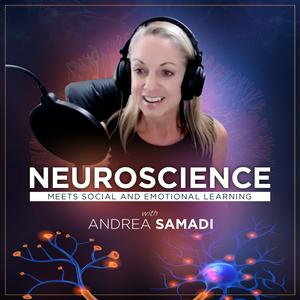
Descarga la app gratuita: radio.net
- Añadir radios y podcasts a favoritos
- Transmisión por Wi-Fi y Bluetooth
- Carplay & Android Auto compatible
- Muchas otras funciones de la app
Descarga la app gratuita: radio.net
- Añadir radios y podcasts a favoritos
- Transmisión por Wi-Fi y Bluetooth
- Carplay & Android Auto compatible
- Muchas otras funciones de la app


Neuroscience Meets Social and Emotional Learning
Descarga la app,
Escucha.
